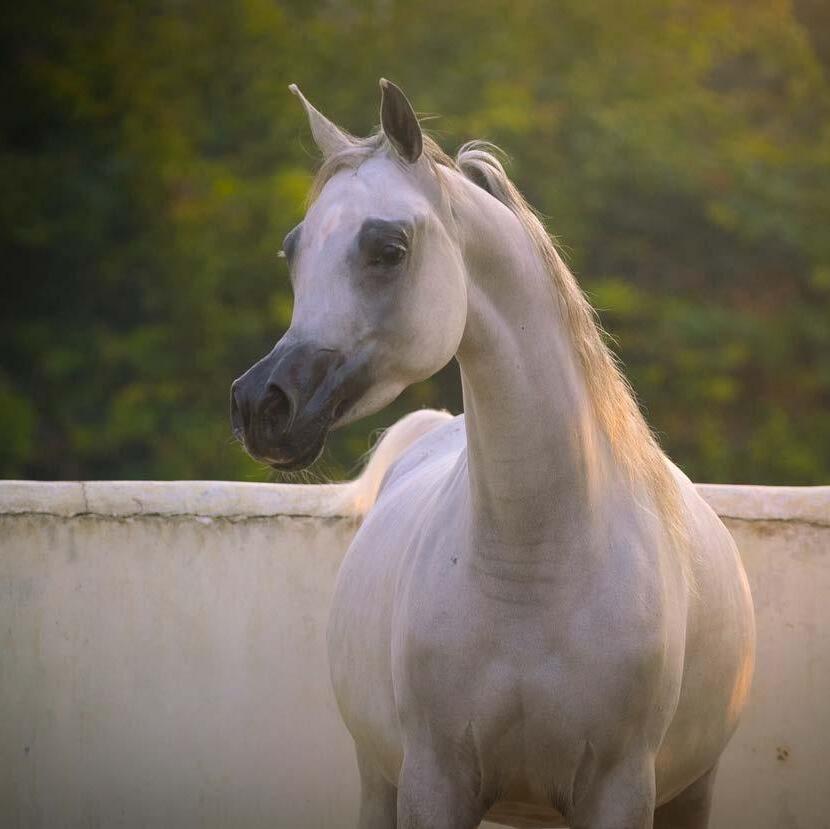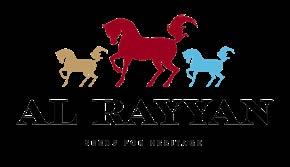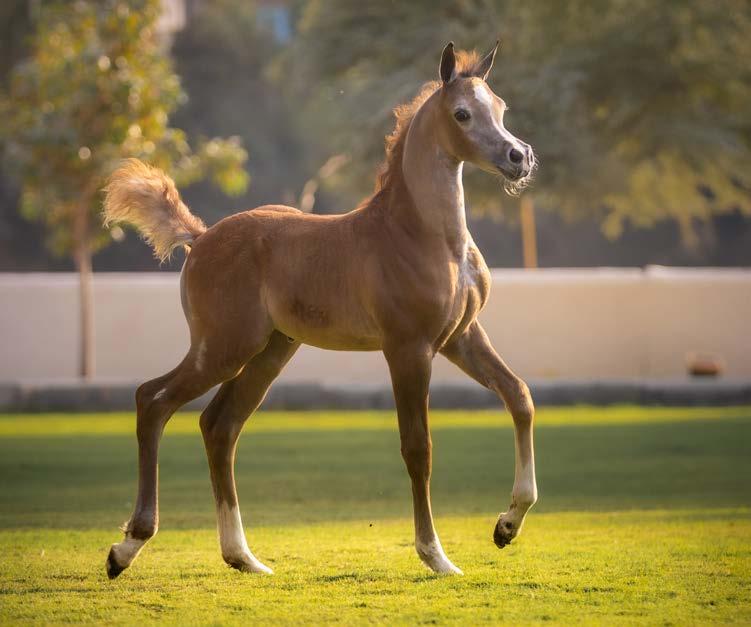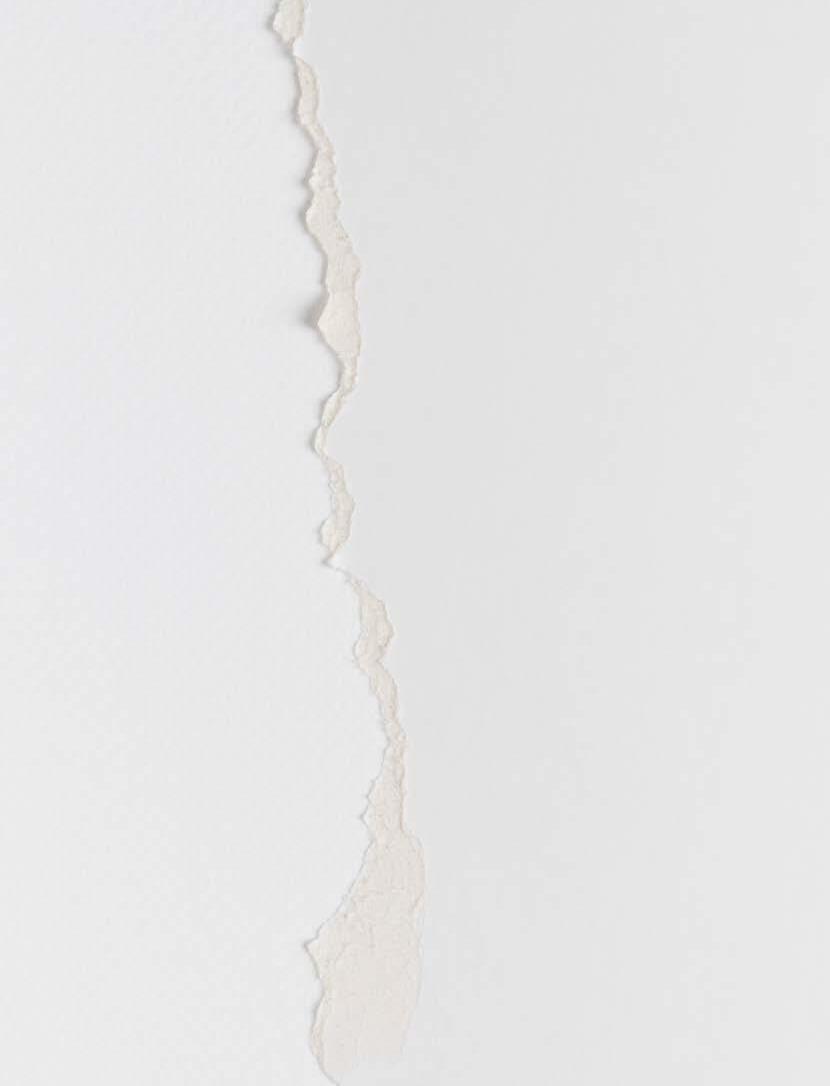DESERT HERITAGEMagazine





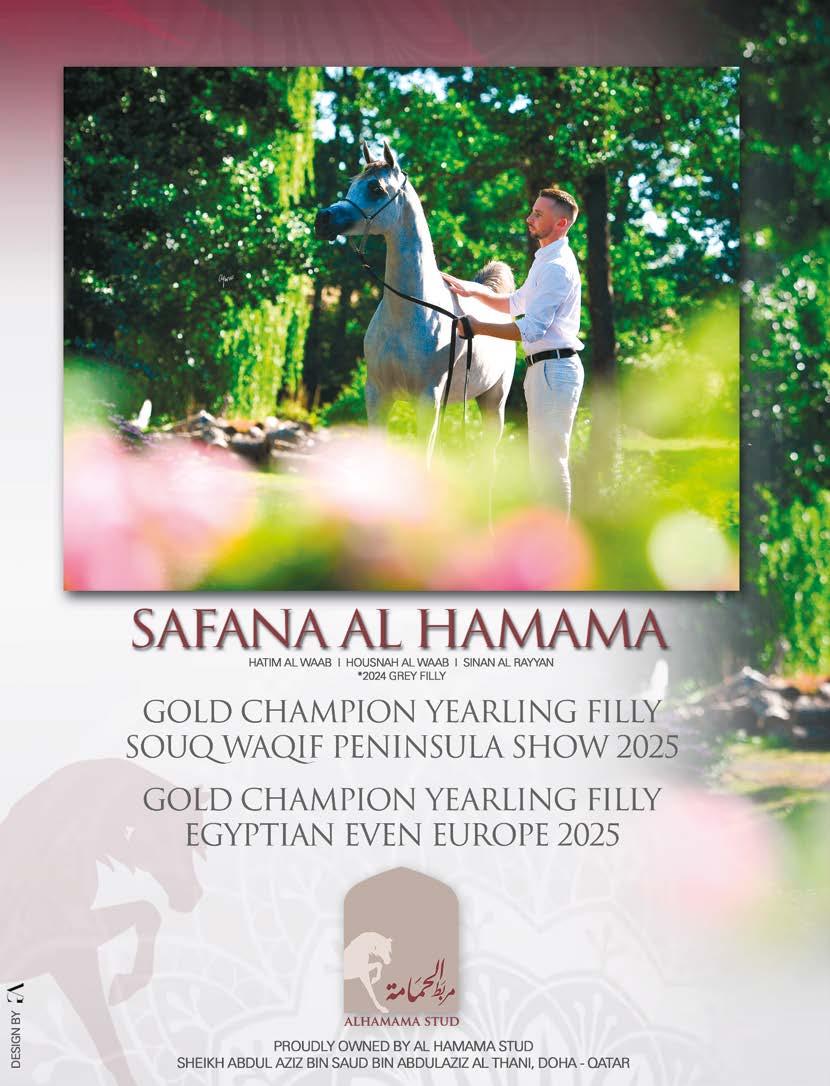

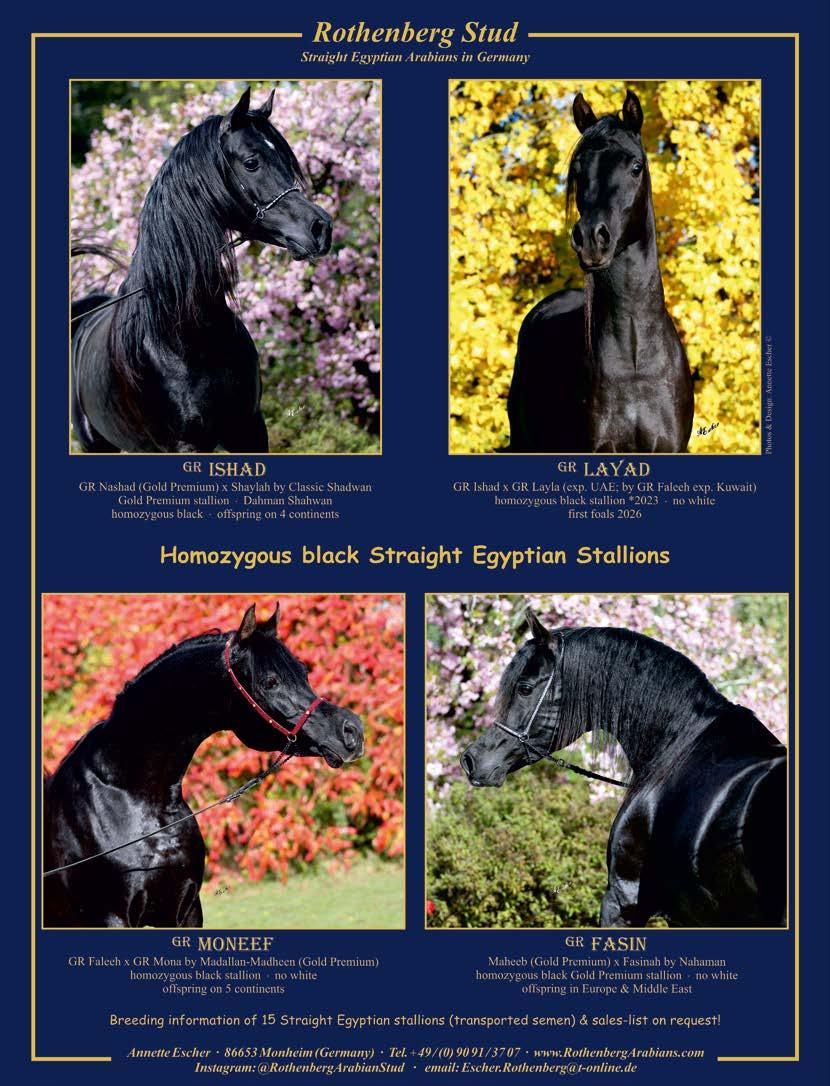



















Frasera Mashar x Frasera Bint Nefisa
2012 Hadban Enzahi

Nabeel al Rayyan x Frasera Mashalla
2017 Kohailan Radban

Pharros x Frasera Mashara
2008 Kohailan Radban
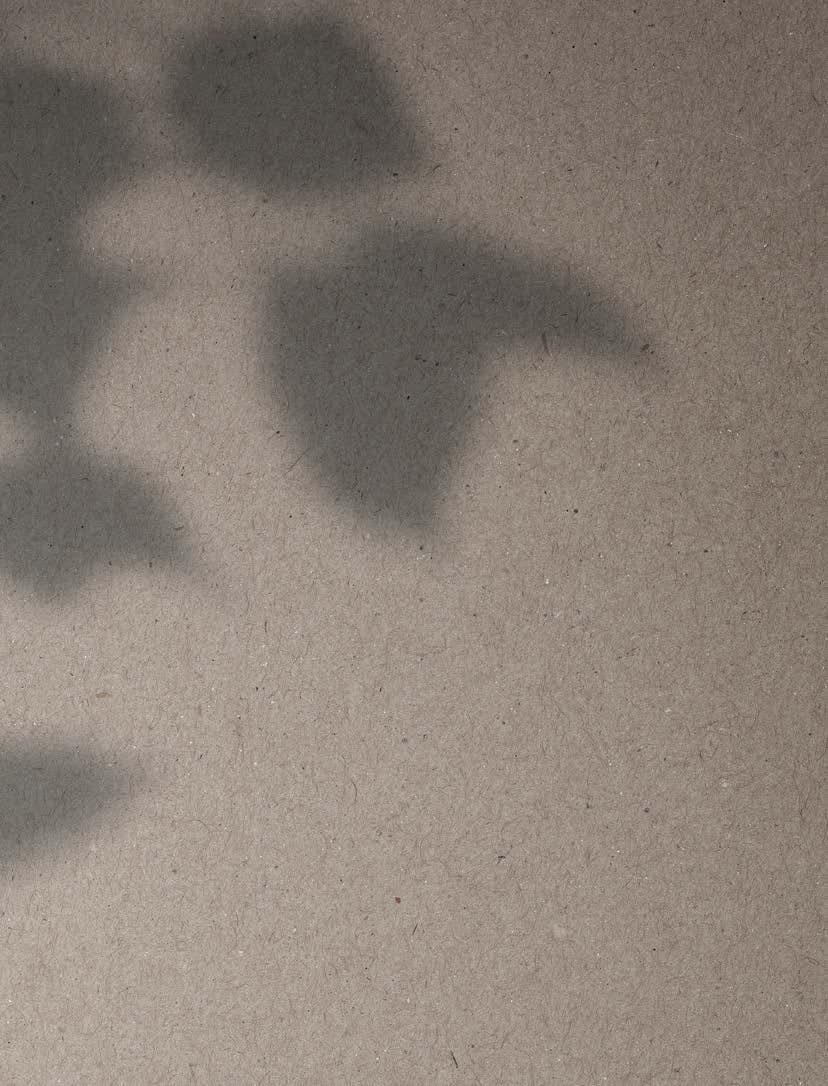
Al Ayal AA x Frasera Madalla
2020 Kohailan Radban

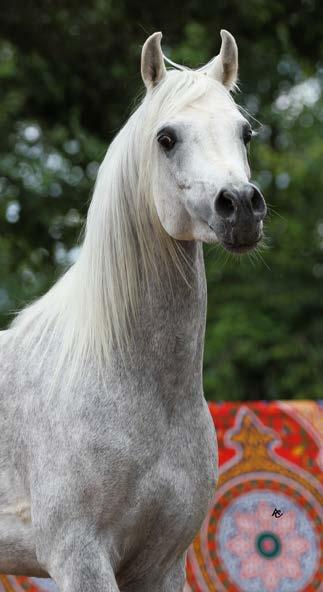
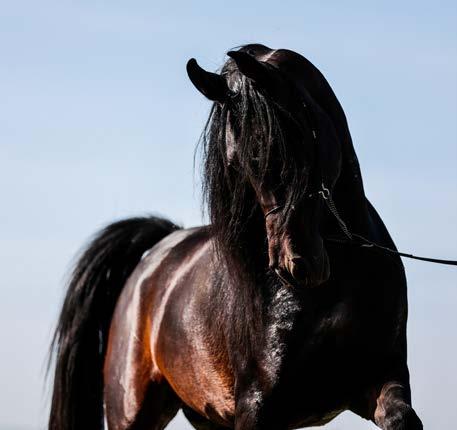




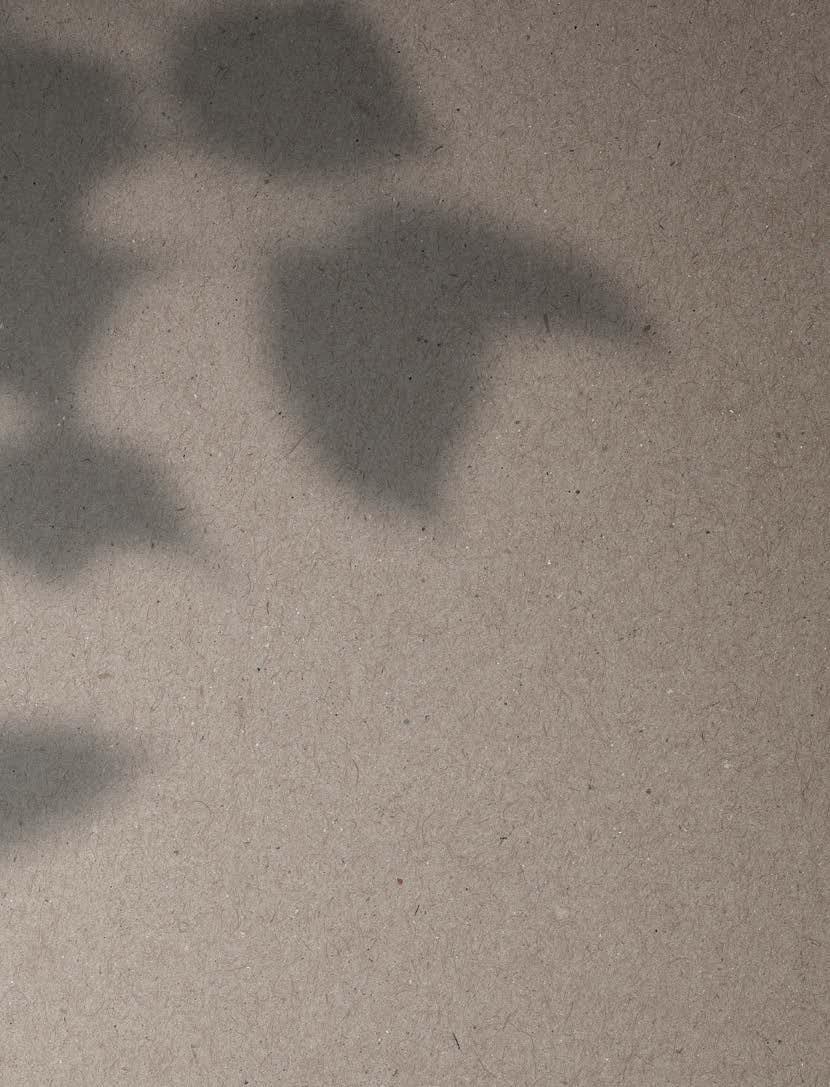
Frasera Mashar x Frasera Carina
2020 Dhama Shawan
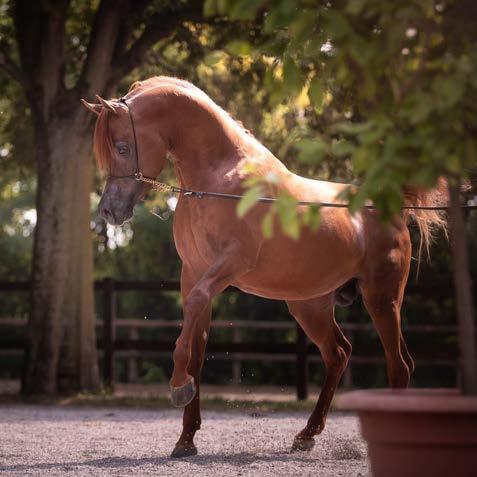

Frasera Ramses Shah x Fasera Wasima 2008 Hadban Enzahi


LA FRASERA
Straight Egyptian Horses

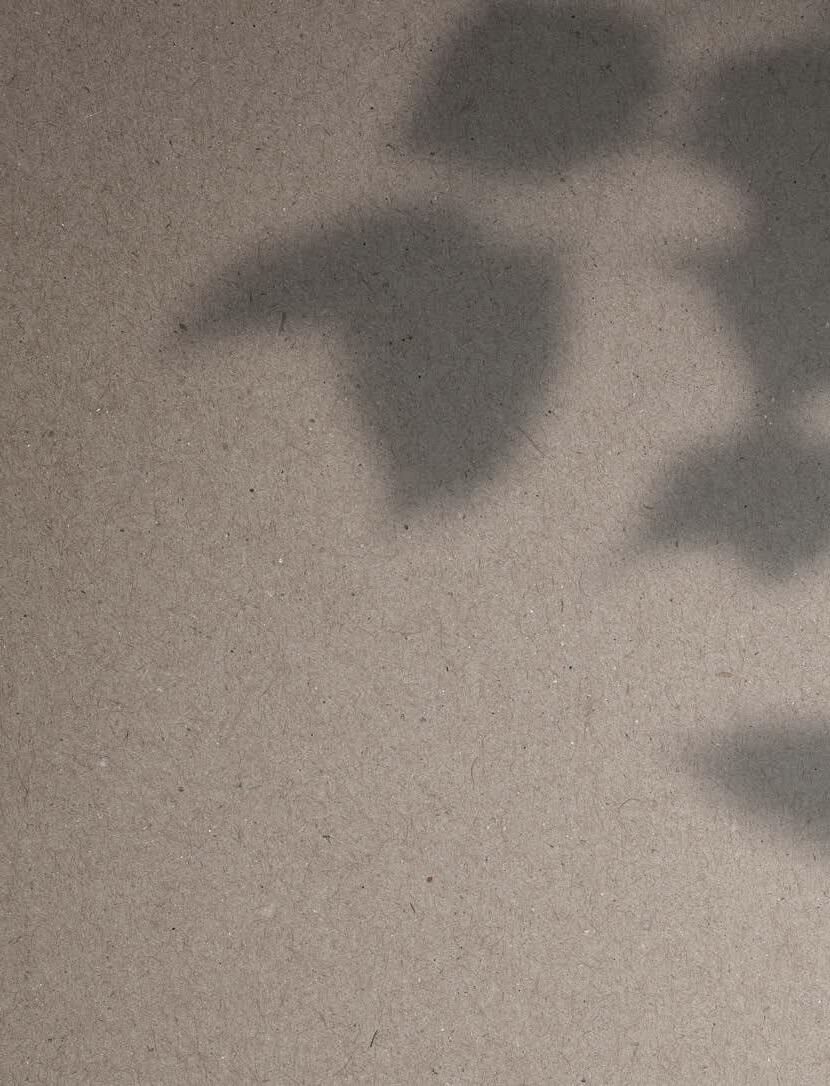

Frasera Mashar x Frasera Bint Nefisa 2013 Hadban Enzahi

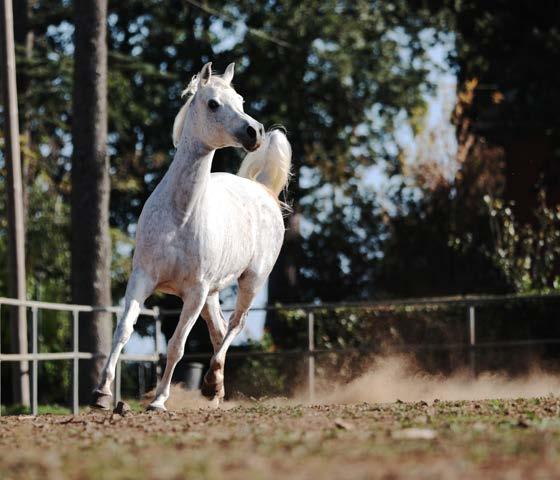
Frasera Mashall x Frasera Madara 2013 Kohailan Radban
Frasera Mashar x Frasera Futura
2013 Dahamah Shawan
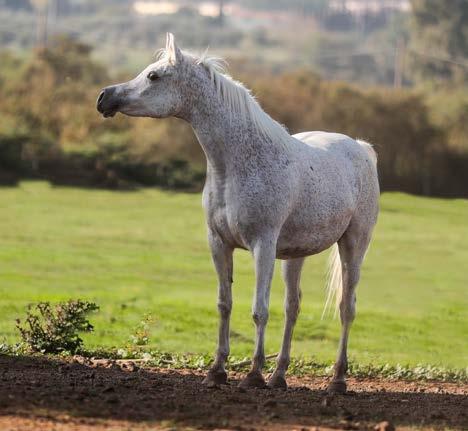

Frasera Mashall x Frasera Magica
2012 Dahamah Shawan
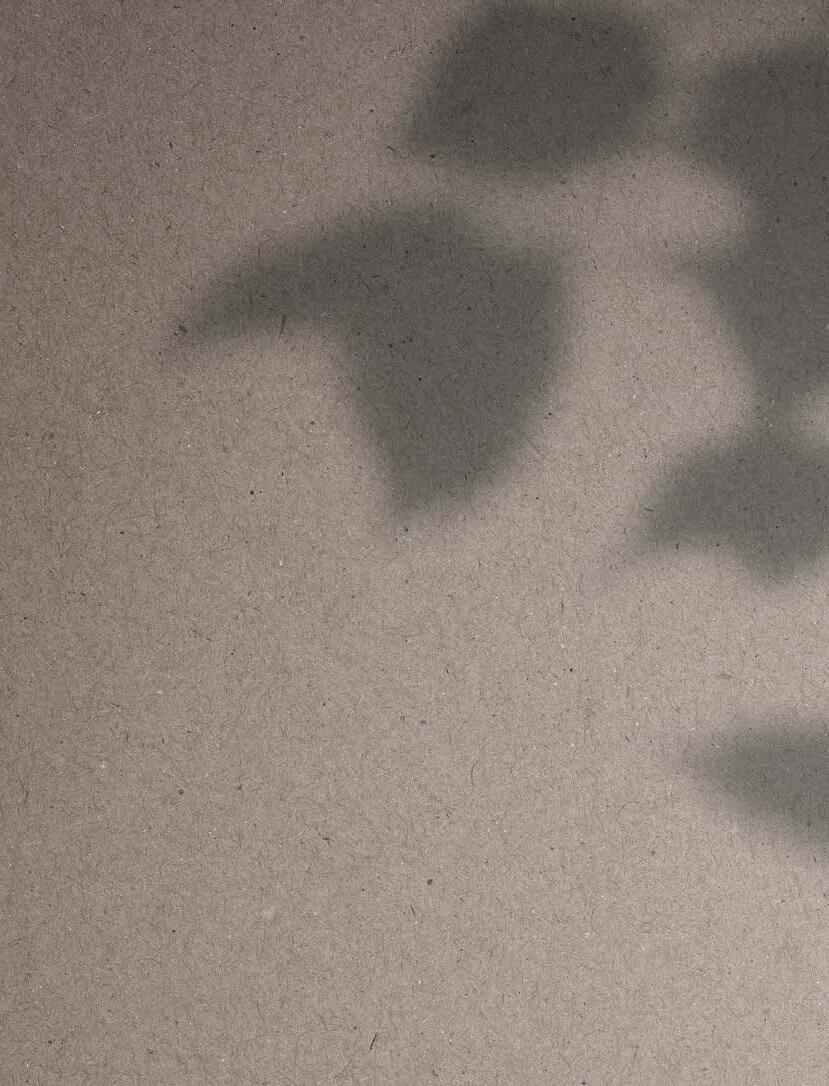



Shahil x Imperial Beveerah
2013 Saqlawi Jedram Ibn Sudan
2017 Kohailan Radban



Desert Heritage Magazine n.71
iscr. trib. di Milano n. 466 del 20/09/02 Expedition in A.P. 70% Milano
Alim Editrice s.n.c. via Ressi, 22 - 20125 Milano (Italy)
e-mail: info@tuttoarabi.it www.desertheritagemagazine.com instagram: @desertheritagemagazine
Publisher Simone Leo mobile: +39 348 5640190 leo.simon@tiscali.it
Editor Alim Editrice snc
Customer Service Fabio Brianzoni fabiobrianzoni56@gmail.com
Account Office/Subscription Office Barbara Belloni amministrazione@alimeditrice.it
Writers
Talitha Bakker
Klaus G. Beste
Cynthia Culbertson
Joseph Ferriss
Leigh Jamieson
Dr. Hans Nagel
Jennifer Ogden Monika Savier
Digital Artwork
Viviana Castiglioni
Printed by
AGF Printing Solutions Srl San Giuliano Milanese Milano (Italy)
Advertising
Alim Editrice s.n.c. via Ressi, 22 - 20125 Milano (Italy) tel. +39 02 36762850 e-mail: info@tuttoarabi.it
©
www.desertheritagemagazine.com

Pag. 18 In memoriam of Don Forbis
Pag. 36 40 years of NK breeding as a unique experiment at Katharinenhof , and the results in 2025
Pag. 48 In search of Morafic
Pag. 56 Desert Genes
Pag. 64 El Dahma. The first queen of Egypt
Pag. 71 6th ANC Straight Egyptian
Pag. 86 The equine art of MonZen
Pag. 98 Salaa El Dine. Chief sire number one

by Joe Ferriss & Cynthia Culbertson photos from Forbis collection
“ Don will always remain alive in the hearts of all who knew him. He was great builder and creator of things. He was always curious, always generous and always helpful. He touched many lives and helped many people. How fortunate it was to know him and how fortunate for the Arabian horse as well. ”


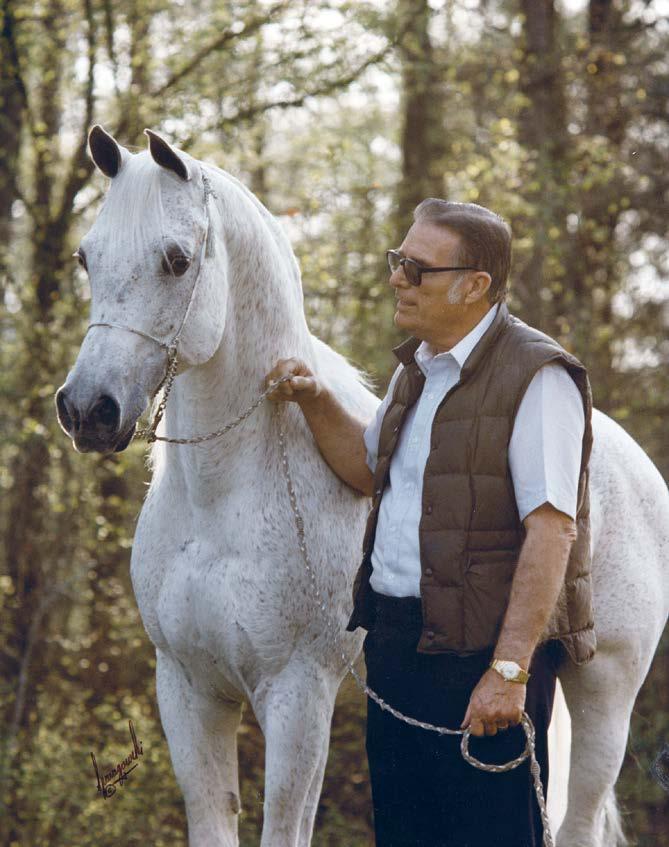
On January 10th of 2009 a memorial service and reception was held to celebrate the life of Donald Forbis who passed away in December 2008 at the age of 81. The world had lost half of one of the most famous couples in Arabian horse history – Donald and Judith Forbis, founders of the renowned Ansata Arabian Stud.
Don grew up in Chickasha, Oklahoma, riding, training and racing the family quarter horses while also becoming a local football star. During World War II he joined the Navy where he saw action in the Pacific. After attending Tulsa University, he was hired by the Halliburton Oil Company as a field services manager to work in countries around the world. In 1957 Don was assigned a position in Turkey where both fate and chance came together as he met Judith Freni who was also working there with the International Cooperation Administration.
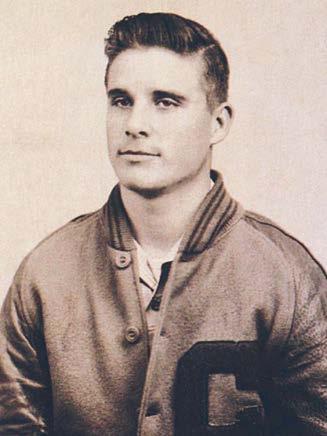
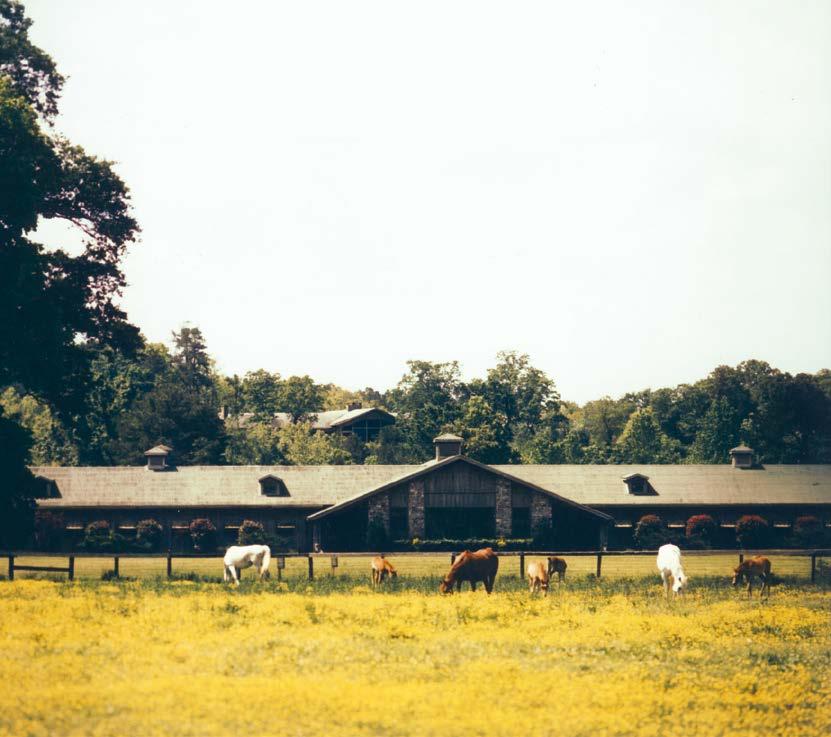


Don and Judi were immediately attracted to each other and shared a mutual love for horses and other animals.
In March of 1958 they married and shortly afterward became involved with racing Arabians in Turkey. It was quite a challenge for a western couple to compete against Turkish locals in horse racing especially with Judi Forbis being the jockey – an almost unthinkable event in this traditional society. Soon they won the respect throughout the region and developed a sincere appreciation of the people and culture of the Middle East. Then their quest began – the search for the ideal Arabian horse. Having traveled throughout the Near East visiting Bedouin and noblemen, princes and peasants, they gained the knowledge and experience that would lay the foundation for Ansata Arabian Stud.
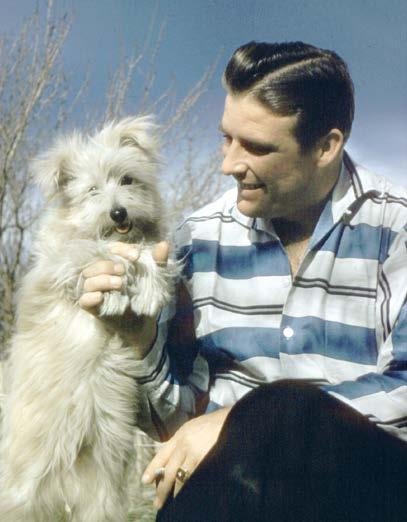
The founding seeds for Ansata were discovered during their travels to Egypt where they selected the weanlings *Ansata Ibn Halima (Nazeer x Halima), *Ansata Bint Mabrouka (Nazeer x Mabrouka) and *Ansata Bint Zaafarana (Nazeer x Zaafarana), bringing them back to the U.S. in 1959. Later they were to import to the U.S. more significant horses from Egypt including the legendary Ansata Bint Bukra (Nazeer x Bukra). Through their remarkable combination of talent and artistic sensibility combined with wisdom, horsemanship skills and love of the Arabian horse, they became among the greatest breeders of Arabian horses in the world.
For five decades the Ansata experience has been a joyous triumph for Don and Judi Forbis as well as all who


love the Egyptian horse. One unforgettable memory is seeing Don with one of his favorite stallions, Ansata Ibn Sudan. It was such a sight, this ivory carved Adonis-U.S. National Champion stallion Ansata Ibn Sudan (*Ansata Ibn Halima x *Ansata Bint Mabrouka) being playfully led by this large, chiseled, Burt Lancaster like man. They were a memorable duo at many Arabian

horse presentations. While all eyes were on the splendid example of a noble and handsome Arabian stallion, it was clear that Sudan valued his handler as his equal.
In 2008 the Forbises celebrated their 50th wedding anniversary as well as five decades of breeding Arabian horses. Special events were created to honor this





momentous occasion. A memorable celebration was held in their honor in Qatar hosted by the famed Al Rayyan stud and again in Lexington, Kentucky at the Pyramid Society’s annual Egyptian Event. Sadly, shortly after this, it was discovered that Don Forbis had cancer, and although he fought a courageous battle it was one he could not win. Yet he was indeed victorious, living a long and glorious life, realizing his wishes and dreams, and most importantly giving to so many his generous wisdom and guidance.
As with all memorial gatherings it was with laughter and sadness, gratitude and lament that people from all over the globe gathered in Mena, Arkansas to pay tribute to this legendary figure, Don Forbis. The service was conduced by Father Joseph Tharakan and touching eulogies were given. First to speak was Judi Forbis, holding her the beloved family Chihuahua, Leezabeth, who had watched over Don’s final moments sitting on his lap right to the end. Judi’s tribute was deeply touching and it was followed by a who’s who of speakers each relating the impact that Don had on them. They included: Dr. Hans Nagel from Germany, President of WAHO; Omar Sakr from Egypt, President of Egyptian Horse Breeders Association in Egypt; Henry Metz, President of The Pyramid Society, Gary Newcomb, President of First National Bank, Arkansas, and Bart Van Buggenhout, Manager of Al Rayyan Farm in Qatar. The service was concluded by a formal military funeral presentation of the American Flag conducted by several veterans and led by LTC Michael Stylianos, U.S. Army,
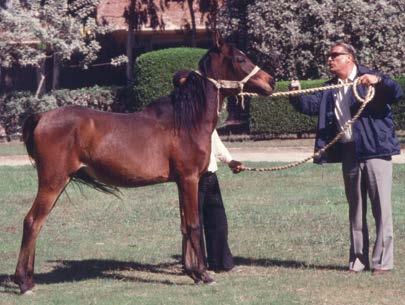
an Egyptian Arabian breeder inspired by the Forbises. The reception which followed was filled with people taking turns telling colorful stories about Don’s special sayings and bits of wisdom, as well as the legendary adventures of being a passenger in anything that Don was driving or piloting. It became clear that he was a larger-than-life figure who touched many people worldwide. Christie Metz lovingly prepared a special booklet filled with pictures and written memories by many who knew Don Forbis. The comments and stories revealed that Don Forbis affected many lives with his humor, wisdom and generosity of spirit.
From my own perspective, Don was a combination of father figure and “buddy.” I often drove down to Arkansas to work with Judi on producing the books she was writing. Judi and I would work long hours in the big barn office or in her study. Once in awhile Don would take me aside and say, “it’s time to take a break!” So off for the long drive to town we would go with a grocery list for Judi. Riding ‘shotgun’ with Don was as adventurous as a wild west stagecoach ride. I did not know it was possible to careen around curves at that speed on the Arkansas back roads, scattering gravel along the way. But somehow I felt safe in that big Cadillac with this seasoned pilot, surrounded by lots of steel. We would talk about clever ways to repair things and about one of my favorite subjects: old cars. Don would get enthusiastically engrossed in the conversation – so much so that when we returned back to the farm Judi would discover that he forgot one of the most

important items on the grocery list. But he would just shake his head and say in a frustrated voice, “C’mon Joe we’re going back to town right now!” So off we went for one single item. I remember one trip when he told me about a rumor an old farmer had relayed to him -tucked away in the back woods of Ansata, way back off the trail that leads down to the stables were some rare old cars, rusting out in the wilderness. No one had been back there in decades. Don had wanted to investigate but knowing how much I loved old cars, he waited until I could go with him. He said it was reported that there were Terraplanes, Studebakers and all kinds of rare cars. So one time we hiked way back into the woods and sure enough we encountered a small gravesite for a few old cars, mostly from the 1950s. We were both as excited as kids at a candy store. We discovered some of the cars had been poached and stripped long ago. There were no Terraplanes but there were still some interesting steel carcasses, including a huge 1958 Oldsmobile. I told Don there was enough chrome on this vehicle that you could sell it off and pay the Ansata electric bill for a year! He had a big laugh and then we decided to let all of it rest in peace and as far as I know no one has ever been back there again. But it was the joy of discovery I shared with Don that always reminded me of his youthful side that lingered all of his years.
Cynthia Culbertson, who has known the Forbises since she was a teenager, also has many fond memories of Don: “In 1979 I took a year off from my university Arabic studies to go work at Ansata, which was a dream come true for a young enthusiast of the Egyptian Arabian

horse. Don was always kind, generous and fatherly to me. He consistently referred to those younger than him as ‘you kids.’ I must say this never changed, and it always brought a huge smile to my face to be referred to as a kid when I was grown and had a ‘kid’ of my own. He was also a consummate gentleman of the old school, protective and courtly with the ladies. Some of my favorite memories with Don were at shows like the Salon du Cheval where Judi was judging and he and I would sit in the audience and talk. I loved hearing stories of the Arabian peninsula in his early days in the oil fields. Aside from the horses, this was a man who could personally document times and places that would never be known to many of us. He


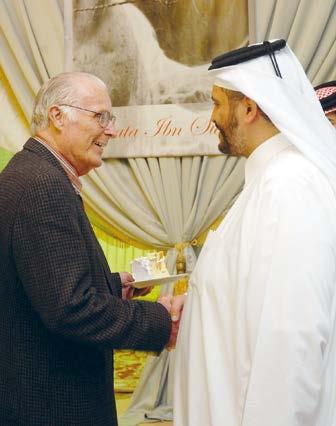
was also enormously proud of Judi and her many accomplishments and never missed an opportunity to express that pride to others. As we would watch a beautiful horse trot into the arena, a vision of the classic type for which Ansata was renowned, Don would turn to me and say, “That one looks like it has a bit of ‘old Ib’ in him, referring to their beloved foundation stallion, *Ansata Ibn Halima. And sure enough he was right!”
After the reception for Don was over, many gathered in the evening at the Forbis residence for more stories and memories. Just before sunset, a group drove to the old Ansata Arabian Stud, which had been sold, for one more memory. We gathered at the gravesite of Ansata Ibn Halima, Ansata Ibn Sudan and other famous legends from the breeding program, to propose a toast to Don and for all that Don and Judi have done for the Arabian horse. It was noted that later a portion of Don’s ashes will be scattered at this same site.



Judi Forbis continues her dedicated work on behalf of the Egyptian Arabian horse including working in Qatar on an Arabian Horse heritage project as well as advising various breeders of Ansata bloodstock.
Don will always remain alive in the hearts of all who knew him. He was great builder and creator of things. He was always curious, always generous and always helpful. He touched many lives and helped many people.

As Judith Forbis often recalls:
“That which we hold in memory remains ours, unchanged, forever.”
Seventeen years have gone quickly by since he passed away. How fortunate it was to have known him and how fortunate for the Arabian horse as well. q

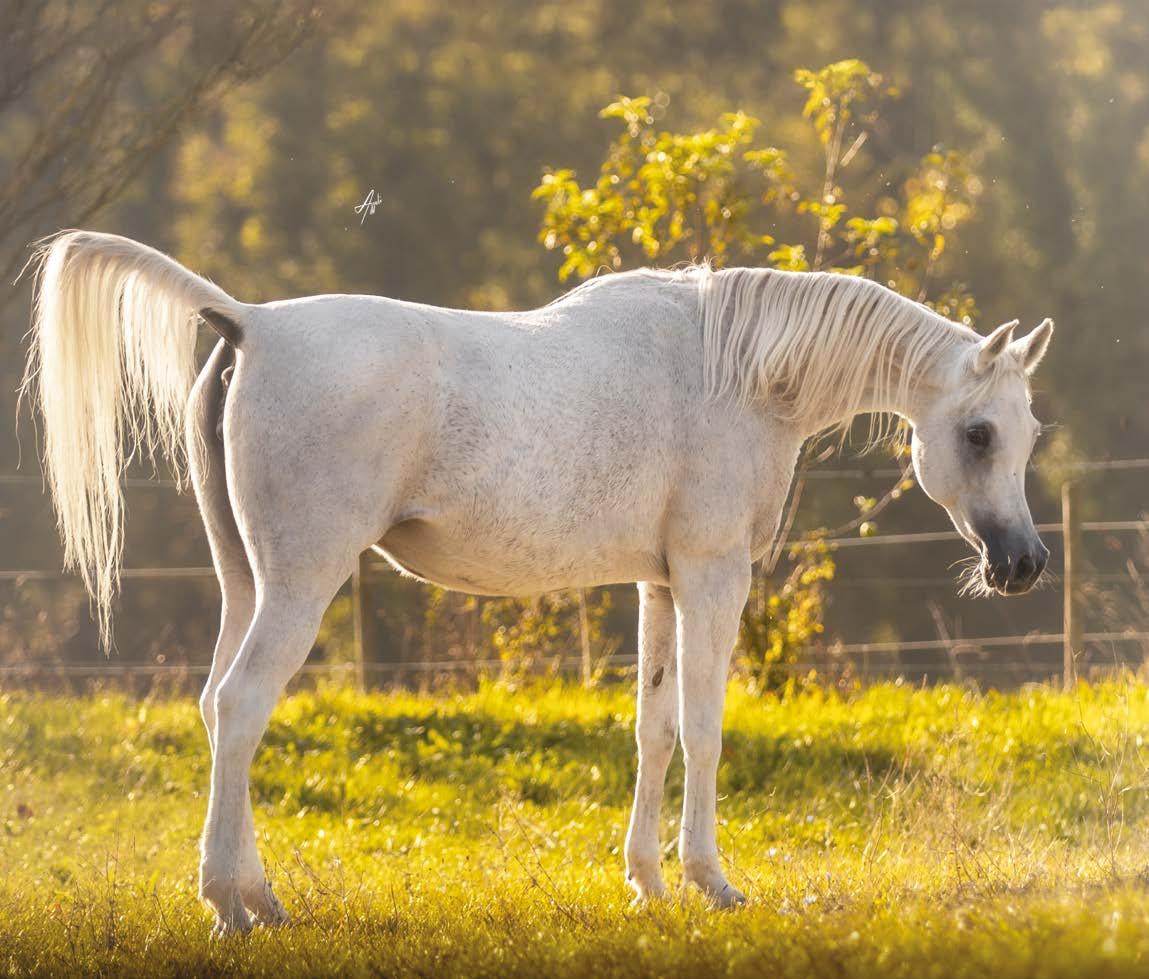


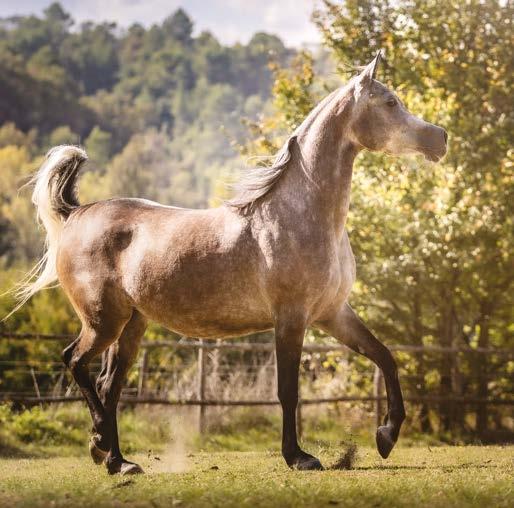
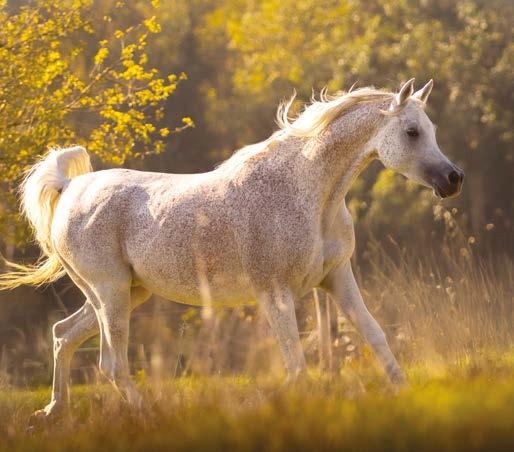



www.straightegyptians.it




mANSO ur A l mur A d * 2017, italy ansaTa nilE ECHo x MaYsouna HaliMa mansour Al murad has made the most of his opportunity at Tre Balzane stud, producing excellent offspring. His outstanding pedigree reflects the crème de la crème of straight Egyptian history – the journey of his ancestors began in Egypt 100 years ago and continued via the usa and Germany to Qatar. From there, his parents came to Europe. Mansour al Murad was born in i taly, where many good broodmares of the finest pedigree still live today. straight Egyptian stallions, asil and blue-listed that have made a name for themselves as type producers are rare today.
His fresh and frozen semen is of excellent quality and is available at a fair price.

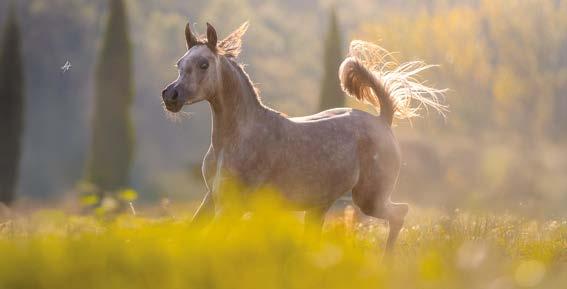

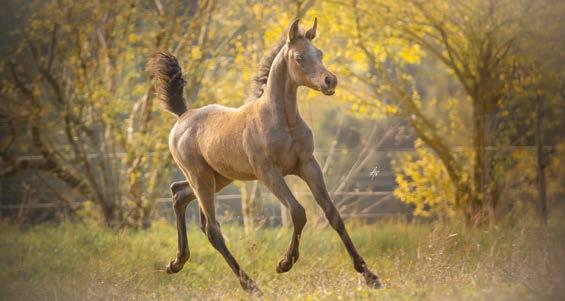
Bronze

Gold
Bronze
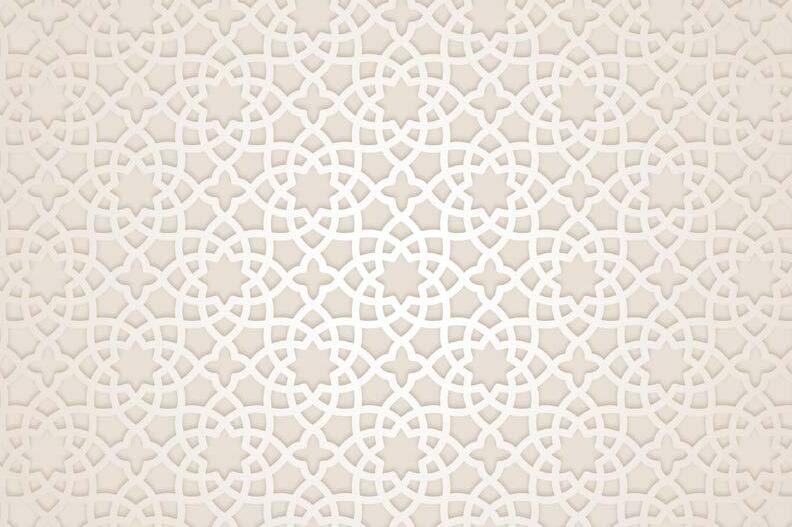




2016
Gold Champion Jr Colts - Qatar Int. SE Horse Show
Gold Champion Yearling Colts - Egyptian Event Europe
2017
Silver Champion Jr Colts - Egyptian Event Europe
Gold Champion Jr Colts - SE World Championship
2019
Gold Champion Seniore Stallions
4th Qatar Nat. Arabian Peninsula Horse Show
Bronze Champion Senior Stallions
9th Qatar Int. Arabian Peninsula Horse Show
BREEDING SEASON 2026
Sinan Al Rayyan | Sharuby HB
2015 Straight Egyptian Stallion

40 years of NK breeding as a unique experiment at Katharinenhof, and the results in 2025.
Looking back at the history of pure Straight Egyptian breeding and explaining the future of the breed.

by Dr. Hans Nagel
It has taken a long time to arrive at this point, where the expected fruits of a delicate horse breeding concept will show up. It is believed that, in animal breeding, it takes up to 5 generations, until a certain type or even a new breed is relatively firmly fixed and good enough to be generally or even officially accepted. Also, in Arabian horse breeding a 5-generation pedigree is required for a horse to be eligible for registration in an official stud book. However, certain questions are remaining as follows: are these 5 generations enough, or are more – 6 or 7 – required, to develop and to compose a population, which gives the expected results; which measures and decisions were taken during this 5 generations period, and finally very important, what was the quality of the animals which were chosen at the very beginning to enter into such a programme.
It looks as if four main decisions are very fundamental for a later success.
1. It must be very clear, what is the aim of all the breeding effort; therefore, a good definition is required for the purpose, the type and features of such a final result.
2. It is vital to choose the proper root stock for such a concept. Only the best available stock for the future sires and dam is a promising base for a good outcome.
3. In each generation a suitable selection programme had to be applied, considering physical criteria and mentality.
4. How many families are required to build up the future population.
In the early 1920s, Poland established the first Arabian Stud Book and breeding of Arabians became official. 16 families were kept for selection. Also, in Egyptian breeding at about the same time, 16 root mares ware chosen. It was the Egyptian Royal Agricultural Society (RAS), which was in charge of creating such an Arabian breeding population. However, in each of these programmes it soon became evident, that only some of these families made a valuable contribution to the development of this total population. In the Polish breeding, these 16 families still exist, but half of them are kept as a heritage only without any impact on the Polish daily breeding work.




A similar development was seen in Egypt. In the course of time only 8 solid families remained. They were collected and further bred in the “El Zahraa Arabian Horse Stud”, near Cairo. All Egyptian Arabians worldwide are based on these root mares, including the later added “Inshass Stud”, the Royal Stud of the Egyptian Kings Fouad and Farouk.
On the stallion side the RAS decided to acquire a great number of stallions. Some of them were bred in Egypt, many purchased from the Crabbet Park in England, mainly those whose ancestors were once imported from Egypt to

Great Britain. Only very few of them were chosen for the RAS breeding concept, the majority were placed in stallion-depots around the country, to improve the local horse breeds.
From the 1920s until around 1950s, the Egyptian Arabian breeding enjoyed a very positive period. Experienced horsemen like Dr. Brunch, Dr. Rasheed and later on Dr. Ameen Zaher directed the breeding programme. An amazing group of brood mares and stallions became the source of a very successful breeding population. Anyone who visited the El Zahraa Stud in the 1950s and 1960s was impressed




by the quality of this special breeding herd of a bout 50 mares and up to 10 stallions. They all represented an Arabian horse, which was blessed with elegance and lightness, exposing the type of their historical desert ancestors.
Then, in the 1950s a second period began and the look of the El Zahraa Arabians started to change slowly. Additional stallions from other sources were introduced into the herd and the number of stallions used in each breeding season and in each generation, were doubled or even tripled. In the first 25 years the population was nearly closed, after that the concept was widely opened.

Such opening for new genetic material should have fostered positive effects, but also under such new circumstances an adequate selection programme should have been applied as well. But no significant steps were taken in that direction.
A clear conception was not followed up, instead many facts were influencing or interfering with the breeding work: the racing community in Egypt asked El Zahraa to be involved in their activities; customers from Europe and USA pushed them to breed bigger and more solid horses. Another group wanted “NazeerFree” breeding stock. And finally, some foreign


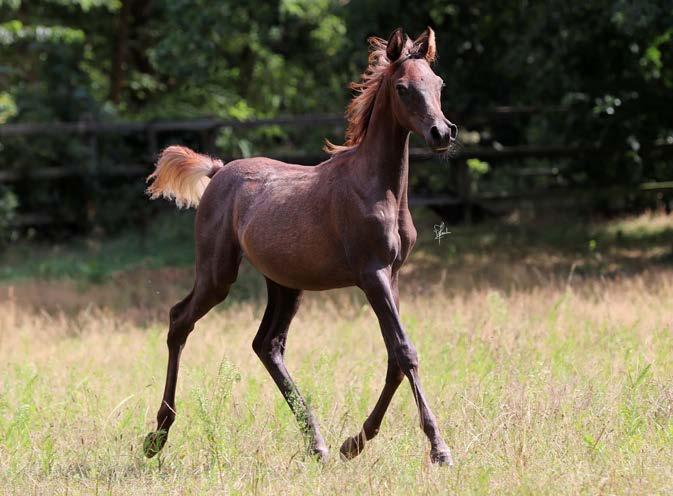

pedigree fanatics irritated many new breeders with their strange “purity breeding” philosophy. It became difficult for the stud management to deal with all these requirements.
Nobody was there, to control or to give valuable advice and stand up with self-confidence and forcefully refused all these partly unreasonable or even destructive requests.
In the 1950s and 1960s, some fortunate breeders from abroad, could still acquire Arabians bred in the first period, like the Marbach Stud in Germany, the Ansata Arabians and Gleannloch NK NILEEN bay filly 13.06.2025
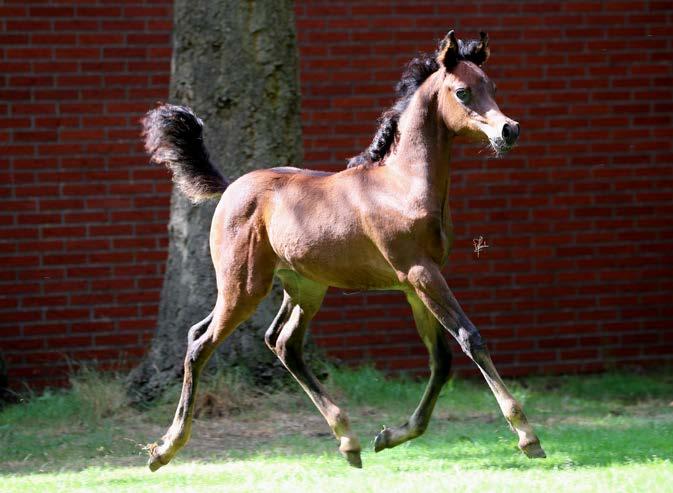
Farms in the USA, Katharinenhof in Germany or the Babolna Stud in Hungary. Each of them progressed, based on the breeding stock they could acquire at that time in Egypt, and their own concept in Europe or in the USA. At the Katharinenhof, the NK Arabians concept however, was different from all the others. It looks as if none of the other customers of El Zahraa spent so much time, studying the Egyptian horse population beforehand as deeply as I did at the Katharinenhof.
In understanding their breeding procedure of the first period more properly, it led me to




believe that in a closed breeding programme, with only 3 or 4 families, the homozygosity of a limited breeding population could be increased more efficiently to a higher level. The effect would be that after a few generations; a certain Arabian type would emerge in mostly equal quality. In fact, after 5 and 6 generations of testing and selecting work, foals with such equal characteristics and features were showing up and represented a type of their own, similar to those as shown in historical documents of the Arabian horse in the past.
In the NK Arabian concept 3 root mares and their families and stallions representing only one single sire line are forming the total breeding concept. They are
bred to each other by considering the proper parental relationships, evidenced and monitored by a DNA programme and proper knowledge of each horse in its capacity as a breeding partner. Offspring testing is one of the major tools in the ongoing selection process.
The following photos are of all Arabian foals born at Katharinenhof in 2025 as a sample of a quite homogeneous breeding population. Such fillies could act as perfect root stock mares for a future family due to their solid and strong genetic composition.
More information about the NK Arabian breeding concept is available on www.nk-arabians.de q






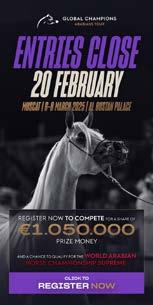




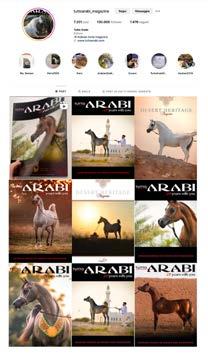


Abbonamento per l’Italia costo annuale (9 uscite)
€441 - (costo spedizione tramite corriere espresso DHL incluso)
Subscription Worldwide (9 magazines per year)
Europe €397 - Arabia/America/Asia/Africa €432 - Australia €452 (Delivery by Post included in the price)
Europe €510 - Arabia/America/Asia/Africa €554 - Australia €579 (Delivery by DHL courier included in the price)
info@tuttoarabi.it
Cognome/Surname________________________________________Nome/Name
Indirizzo/Address
Città/City__________________________________Cap/Country Code____________Paese/Country Telefono/Phone________________________E-mail
Firma/Signature
q Versamento su c/c postale n. 20843256 o a mezzo vaglia postale intestato a: Alim Editrice s.n.c. - via Ressi, 22 - 20125 Milano - Italy
q Pagamento con Carta di Credito/Payment by Credit Card
q VISA_____________________________________________________________ q Master Card
Scadenza/Expiration________________________Codice di Sicurezza/Security Code
Firma/Signature
Non accettiamo pagamenti con assegno/We don’t accept payments by cheque


Abbonamento per l’Italia costo annuale €265 - (costo spedizione tramite corriere espresso DHL incluso)
Subscription Worldwide yearly price
Europe €270 - Arabia/America/Asia/Africa €285 - Australia €295 (Delivery by Post included in the price)
Europe €353 - Arabia/America/Asia/Africa €371 - Australia €384 (Delivery by DHL courier included in the price)
info@tuttoarabi.it
Cognome/Surname________________________________________Nome/Name
Indirizzo/Address
Città/City__________________________________Cap/Country Code____________Paese/Country Telefono/Phone________________________E-mail
Firma/Signature
q Versamento su c/c postale n. 20843256 o a mezzo vaglia postale intestato a: Alim Editrice s.n.c. - via Ressi, 22 - 20125 Milano - Italy
q Pagamento con Carta di Credito/Payment by Credit Card q VISA_____________________________________________________________ q Master Card
Scadenza/Expiration________________________Codice di Sicurezza/Security Code
Firma/Signature
Non accettiamo pagamenti con assegno/We don’t accept payments by cheque
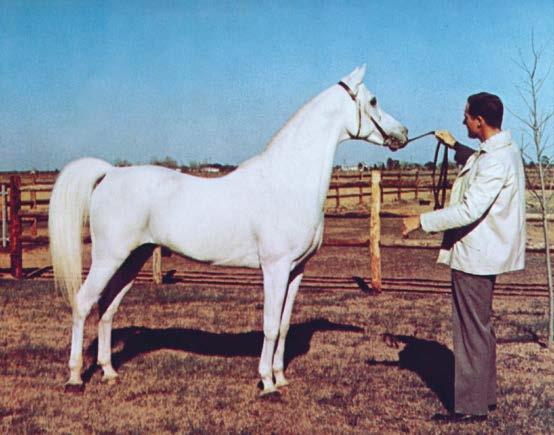

When I first saw the famed stallion Shaikh Al Badi (Morafic x Bint Maisa El Saghira) as a two year old I was smitten with his nobility and uniqueness relative to the kinds of Arabians that were mainstream in the U.S. in the early 1970s. [See Desert Heritage no. 14/2008] In my curiosity, I just had to discover what made such a horse so special and this led me on a journey to discover more about his sire Morafic who was imported to the U.S. in 1965 as a nine year old. Prior to coming here he was a much-admired stallion in Egypt and left behind 56 get at the time of his importation. Eleven of those would also later come to America.
The early 1970s in America was a grand time for an ever-growing enthusiasm for the Egyptian horse. The magnificent stallion Ansata Ibn Sudan (Ansata Ibn Halima x Ansata Bint Mabrouka) had won the prestigious title of U.S. National Champion and the unforgettably beautiful Serenity Sonbolah (Sameh x Bint Om El Saad) was crowned U.S. National Champion Mare the same year. Numerous other Egyptian horses were winning big at the U.S. and Canadian National shows as well as regionally around the country. Many of those winning were the get of Morafic. By the end of the 1970s Morafic was the leading imported Egyptian sire of national winners so it was quite clear that many were impressed with his influence. So many of his get had that special spark of nobility, dryness and incredible style.
Every photo I could get my hands on would further fan the flames of my enthusiasm to see this horse who seemed as if to step out of a 19th century engraving, bearing a higher sense of nobility. Speaking with those who had already seen the legendary Morafic in person, confirmed that this is an Arabian horse that I must see.
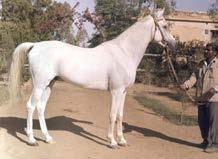
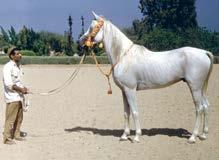

It was easy to conclude that Morafic was the most extraordinary blend of extreme beauty combined with strength. His head was unusual for his time, so extremely refined, long foreface leading upward to very lively noble eyes. It was a “new look” to many Arabian enthusiasts in America, something many were not familiar with at the time. In addition his neck was more refined than most Arabians of the time while it was gracefully attached to very long shoulders reaching well back into prominent withers. The whole impression of his forehand was one of power yet his silhouette was dramatic, resembling the finest desert bred Saluqi dogs, and conveying the look of speed and grace.
Realizing all of these qualities, I felt that I must see this horse. However our travel plans to Texas had been put on hold for various reasons, requiring a great deal of patience on my part while adding to my determination. In the meantime we had seen a good number of other Egyptian bred horses at regional shows. Some were sired by Shaikh Al Badi who had already impressed me greatly. Given his popularity as a sire there were a good many Shaikh Al Badi get in the show ring. The get of other Morafic sons began emerging in the show ring as well. In our area these included horses sired by TheEgyptianPrince (Morafic x Bint Mona), Al Metrabbi (Morafic x Sammara), Dalul (Morafic x Dawlat) and Khofo (Morafic x Nabilahh).
Early in 1974 we were making our plans for a summer vacation of visiting Arabian breeding farms to take movies and notes. First on our list was to go to Gleannloch and see the legendary Morafic. Then came the sad news. In March of that year Morafic had died. I was stunned and shocked. This supreme vision of an Arabian was gone. He was only 18 years old, which seemed too young for such a magnificent desert steed. It left me with a huge void and sadness. I was not able to see him in person. My only compensation became a quest to search for the illusion of Morafic in his descendants.
In May of 1974 was the first of a series of major Arabian Horse Events called the Arabian Horse Fair, held in Louisville, Kentucky. This spectacular four-day event included not only a major show and exhibits but also a major stallion row with stallions of all Arabian horse bloodlines. Fortunately among the famed stallions were a number of Egyptian stallions which included four sons of Morafic and three grandsons:
Al Fahir (Morafic x Sanaaa by Sid Abouhom)
Hamid Ibn Morafic (Morafic x Somaia by Anter)
Mosry (Morafic x Sanaaa by Sid Abouhom)
Shaikh Al Badi (Morafic x Bint Maisa El Saghira)
Al Nahr Montego (by the Morafic son Ibn Moniet El Nefous x Bint Fada)
Moatasim (Sultan x Neamat by Morafic)
Sakr (Sultan x Enayat by Morafic)
All of the above were grey and though they varied somewhat overall, one could clearly see Morafic’s influence in details such as dryness, great nobility, depth of heart girth with long sloping shoulders and good movement. Sakr became a very famous performance horse in the U.S. Under saddle, Sakr perhaps captured
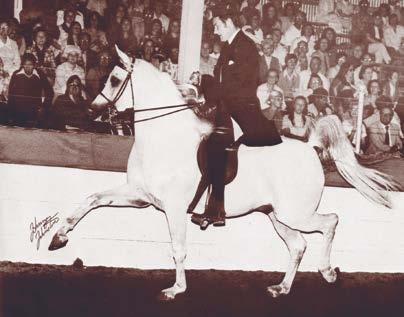
the love and imagination of many admirers of the Egyptian horse for his incredible style and action. To see him perform was almost like watching a firey desert steed protect its master from attacking lions as he struck out with such brilliant reaching motion, lively eyes, protruding veins, extremely expanded nostrils which drank in huge volumes of the wind! Yet in the stall he was as quiet as a turtle.
Morafic daughters also became a sensation just like his sons. Many were National winners. Without a doubt one of the most beloved Morafic daughters was the multi-National halter and performance winning Nahlah (x Mohga by El Sareei), half sister to Ibn Galal. She was imported from Egypt in 1965 along with her sire. She was stunningly beautiful and a versatile performer as well. Sadly she died young after only 3 foals so I did not see her in person. Another Nationals performance winning Morafic daughter, the beautiful Dalia (x Romanaa II by Sameh) will always be remembered as the dam of Imperial Imdal. In 1975 four Morafic daughters were major National winners, Bint Bint Hanaa (x Hanaa by El Sareei), Shafeekah (x Magidaa by Alaa El Din), Doriah (x Dawlat by Anter) and Shahira x (Shiaa by Alaa El Din). Shahira is the great grand dam of Paris World Reserve Champion and Middle Eastern Champion Bint Saida Al Nasser.


That same year was the second Arabian Horse Fair and it was an even bigger event than the year before. Included in the stallion row were 24 straight Egyptian stallions among which were seven Morafic sons and four grandsons:
Ansata El Emir (Morafic x Ansata Sabiha by Ansata Ibn Halima)
Dalul (Morafic x Dawlat by Anter)
Hamid Ibn Morafic (Morafic x Somaia by Anter)
Ibn Moniet El Nefous (Morafic x Moniet El Nefous by Shahloul)
Ibn Morafic (Morafic x Kahramana by Anter)
Mosry (Morafic x Sanaaa by Sid Abouhom)
Shaikh Al Badi (Morafic x Bint Maisa El Saghira)
Al Nahr Montego (by the Morafic son Ibn Moniet El Nefous x Bint Fada)
Mazin (by the Morafic son Ezz El Arab x Nahid by Sid Abouhom)
Sakr (Sultan x Enayat by Morafic)
Serenity El Bitan (by the Morafic son Khofo x Serenity Sagda by Anter)
Morafic’s grandson Sakr had again returned to the stallion row at the Fair. Again he was a crowd favorite as a brilliant performer in the show portion of the Fair.

His son, Nabiel was also in the stallion row. The young Nabiel was to later win U.S. Top Ten Stallion in 1975. He was of interest to me because he was out of the legendary Magidaa, who was also dam of the beautiful Bint Magidaa, sired by the Morafic son Khofo. Because I had already fallen in love with the lovely young Bint Magidaa, I was curious to see her sire Khofo but more years would pass before that visit took place.
The next few summers were spent visiting the major Egyptian breeding farms in America in search of more


Morafic descendants. At the famed Anchor Hill Ranch my wife and I were able to see the magnificent Al Metrabbi (Morafic x Samarra by Morafic). He was a very handsome ivory white imposing sight with an ideal blend of both dry refinement and masculine strength. He displayed great nobility and style but also with an amiable personality. He was very athletic and a great mover. He had very short canon bones in an ideal proportion with long forearms and deep heart girth. Al Metrabbi was U.S. National Champion Futurity Colt in 1970 and sired many winners in both halter and performance. He was the only incest-bred son of Morafic. He was a popular sire producing 267 foals.
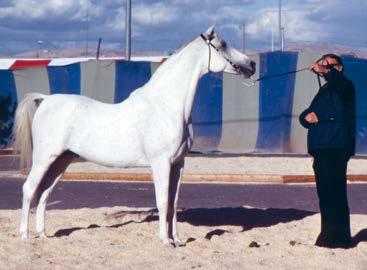
Gleannloch Farms sold Al Metrabbi as a youngster to the Atkinsons of Anchor Hill Ranch where he spent most of his life until he was an old horse when Gleannloch leased him from Anchor Hill.
On a visit to Ansata when the Forbises were located in Texas, we had the pleasure of seeing the regal Ansata Shah Zaman. He was the result of breeding Morafic to his full sister Ansata Bint Mabrouka. Ansata Shah Zaman was a very noble horse with the look of the eagles often looking in the distance, head held high, and always interested in the mares. He was fine skinned horse with a very dry quality. He displayed an alert expression with big lively eyes, set in a masculine face with deep chiseled jowls. Like Al Metrabbi, he had short canon bones and very free movement. He was extremely agile. Without question his daughters were magnificent and proved to be excellent producing mares.
It was only natural that our next visit be to Bentwood Farms in Texas where three sons of Morafic were at stud: Refky (x Rafica by Nazeer), TheEgyptianPrince (x Bint Mona) and Ibn Moniet El Nefous (x Moniet El Nefous). Refky was a tall bold chestnut horse born in Egypt who had a racing career before being imported to the U.S. He was a maternal half brother to the EAO sire Mohawed (x Alaa El Din). TheEgyptianPrince was a full brother in blood to Ansata Shah Zaman. He was smaller horse, quite refined with a handsome noble expression and nicely shaped head with small muzzle. There was style and agility to his movement. Perhaps
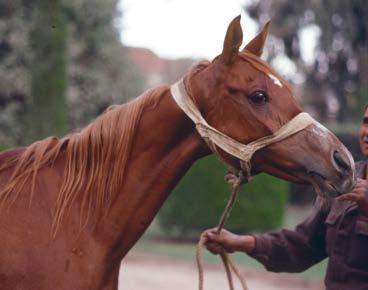
TheEgyptianPrince’s most internationally renowned son is Prince Fa Moniet, sire of many excellent Ansata bred mares as well as the important sires AK Shah Munifeh (x AK Munifeh), Ansata Iemhotep (x Ansata Nefara) and Ansata Sinan (x Ansata Nefara). In his lifetime TheEgyptianPrince was to prove a very popular sire producing 826 foals. He also may have been the longest living Morafic son living to age 28. The chief sire at Bentwood was Ibn Moniet El Nefous, the result of breeding Morafic to his granddam making him 62.5% Moniet El Nefous blood, the highest in any Egyptian. He was imported to the U.S. by Jay Stream as a yearling and acquired by Bentwood Farms when he was 10 years old. He was a very noble, bold white stallion that was truly his own horse not exactly like any of his ancestors. There was an aura about him that you just felt. You sensed his fearlessness, giving a sense that you are visiting him in his space on his terms. This was a true warhorse. He was a US Top Ten stallion but also sired many champions both in halter and performance and is found in racing pedigrees as well. His straight Egyptian sons and daughters were much in demand. Perhaps his most well known exported sons to Europe are AK El Sennari (x Il Bint Khedena), and Mohafez (x Ahroufa).
Our visit to Gleannloch gave us the opportunity to see several sons of Morafic and numerous daughters. Morafic’s replacement since his passing was the stallion Ibn Morafic (x Kahramana by Anter). He was a
handsome young stallion with a beautiful head and a lovely eye. There were several chestnut sons of Morafic such as Al Fattah and Zaim both out of Safaa (Sameh x Lubna) and they seemed to more resemble their dam. Zaim was later exported to His Majesty Hassan, King of Morocco. There were lovely daughters of Morafic everywhere. One could not help but notice the beautiful full sisters to TheEgyptianPrince such as Nationals winning Il Muna and Norra. Later that summer we would see a third sister, Bint Bint Mona and it was clear that the cross of Morafic to his sister in blood Bint Mona was certainly a nick. This had already been done once in Egypt before Morafic left, producing the beautiful chestnut mare Farfoura.
There were other travels which led to seeing a few more Morafic get, including the full brothers Shah Nishan and Fehris, both out of Kahramana (Anter x Kamar). Both were noble horses with a bold stylish quality about them but having a bit more masculine bearing, perhaps deferring to some influence through Anter.
Then, ten years after Morafic’s passing we made the long journey down to Florida to visit Bill and Hansi Melnyk at Serenity Egyptian Stud to see Khofo (Morafic x Nabilahh by Anter). This was the last of the Morafic get that I saw in person. By this time Khofo was 19 years old. I had wanted to see him for a long time ever since I saw the lovely filly Bint Magidaa in 1972 and now it was time. As we approached his stall, Hansi told me to go ahead and open the door and step inside. As I entered the stall that opened out into a long sandy paddock, at first I saw nothing. Then from around the corner walking with the long pendulous stride of a
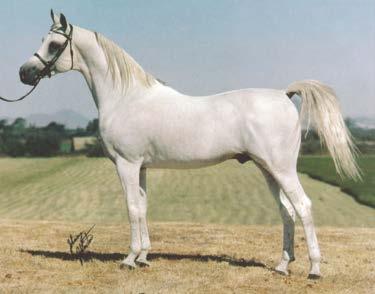


panther, enters the pure white Khofo. He walked up to me quietly and very confidently arched his neck slightly so as to align his eyes with mine and then stared right into my eyes. Unlike most stallions he did not choose first to sniff me for a scent. Instead it was all about the
eye contact -- creature to creature, not man and beast. Those deep dark eyes seemed to radiate the thousand years of the horse of the desert. And then it occurred to me. As I kept looking for Morafic all those years, Khofo reminded me it was something bigger. It was

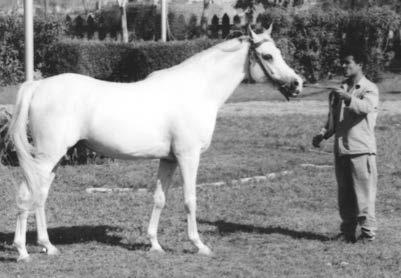
not just Morafic but it was the vision of the noble horse that is supreme and timeless, the gift of Allah that is unequalled. It is what we all look for in the ideal Arabian horse. It was that special, almost indescribable essence that stops us in our tracks. In Khofo’s eyes I finally saw
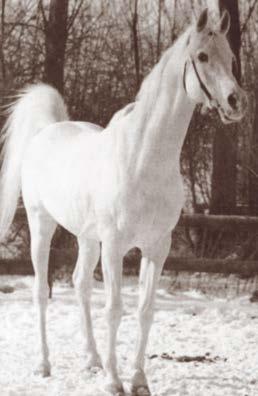
Farag (Morafic x Bint Kateefa by Sid Abouhom) imported to Hungary for the Babolna Stud and later to Germany. Very much resembling his sire.
Forbis photo
Ghalion (Morafic x Lubna by Sid Abouhom) imported to Hungary for the Babolna Stud. Photo here taken in Egypt prior to his exportation.
Forbis photo
Morafic. Without deep souls like Morafic there would be no El Shaklan, no Ali Jamaal, no Marwan Al Shaqab, no Bint Saida Al Nasser, no Ansata Halim Shah. I left Florida that day fulfilled and with a greater appreciation for the heritage of the horse of the desert. q
In the soft morning light of Qatar, when the air is still and the desert begins to breathe, I often watch the mares step quietly from the breezeway.
There’s a rhythm to their movement, ancient, deliberate, unhurried and in those moments, I’m reminded that these horses carry not just beauty, but memory.
For over fifty years I’ve lived and worked with Arabian horses, from my own breeding farm to managing Straight Egyptian Arabians for some of Qatar’s most wellknown breeding programs, and one claim I hear over and over is that ‘Straight Egyptians have bad legs It’s become almost folklore. But after years of foaling, feeding, and watching the next generation grow, I’ve come to a very different conclusion: the problem isn’t in their genes. It’s in what we’ve been feeding them.
The Straight Egyptian Arabian was never meant to thrive on modern, grain-rich rations. Their ancestors survived on the sparse forage of the desert, dry, fibrous, mineral-balanced, and naturally low in sugar and starch. That simplicity shaped their very physiology.
When we impose Western style feeding that is full of cereals, molasses, and starch, we’re asking a desert horse to live on something
By Jennifer Ogden – Qatar
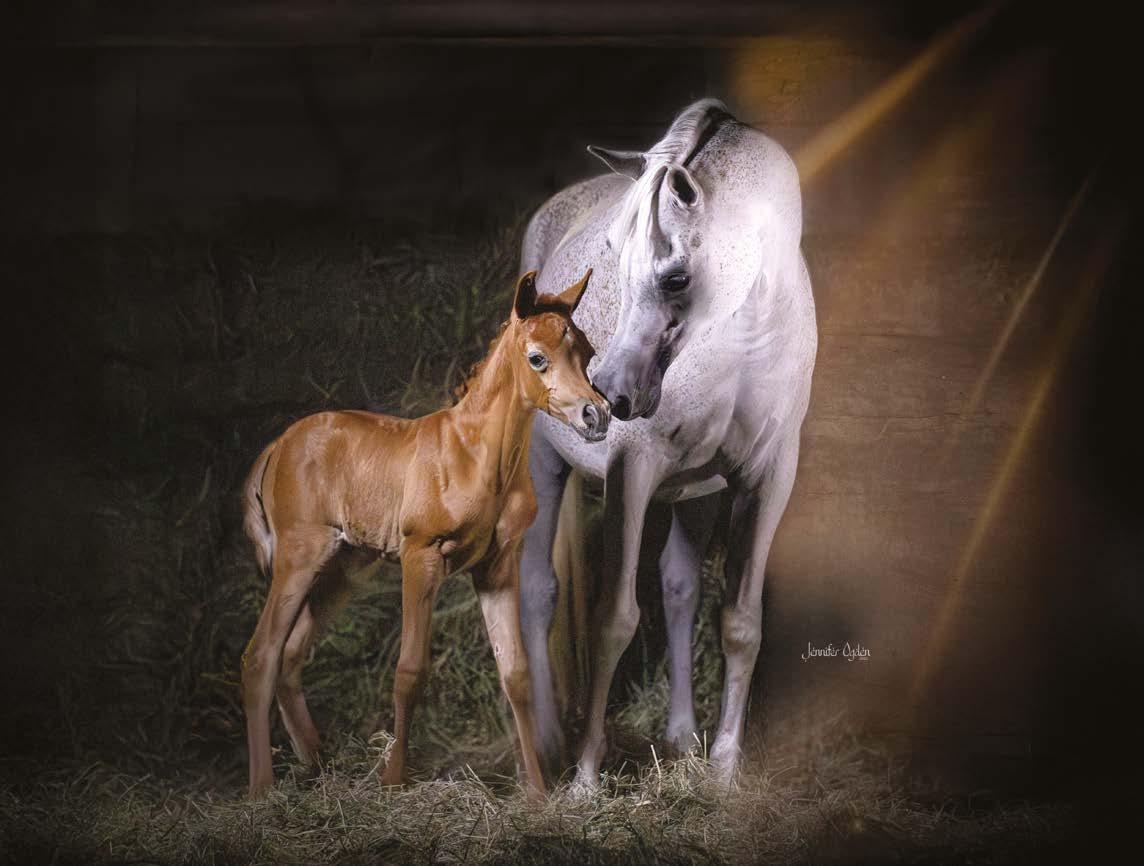
Golden light over the breezeway in early morning. A mare steps forward with her foal beside her — dust drifting softly in the sun.
entirely alien to its biology. The results speak for themselves: limb deviations, OCD’s, metabolic stress, cresty necks, and unstable temperaments.
But when we remove grain and hold sugar and starch around ten percent,
something extraordinary happens. Foals are born with clean, straight limbs, true to type and balanced. Their joints are tight, their bones grow evenly, and their frames align with the ancient desert blueprint.

Through experience and observation, I’ve come to believe that nutrition literally writes the skeleton. What a mare consumes during pregnancy, and what a foal receives during its growth phase, determines the story their bones will tell.
Too much sugar and starch distort that story, soft cartilage, weak joints, uneven pressure that pulls young legs offline. But feed the way nature intended, fibre, controlled protein, balanced minerals, and natural oils like cold-pressed linseed and you see a completely different picture.
Of course, there can be a genetic component too. Some horses cope far less well with high-sugar, high-starch diets than others. Their metabolic tolerance is lower, and they develop inflammatory responses, while other horses may appear outwardly fine, at least for a while. The difference lies in how efficiently the hindgut digests and processes starch. Horses that are sensitive or inefficient starch digesters are far more prone to acidosis, joint strain, and developmental deviations.
It’s often quite easy to tell when a horse is struggling with digestion, the smell of the manure changes. A sour, yeasty or “fermenting” odour is a clear sign that undigested sugars and starches are reaching the hindgut, leading to acid imbalance. When the smell is strong or unusual, it’s your early warning that something in the diet isn’t being digested properly.
Over time, I began to notice another pattern, it was subtle at first, then unmistakable. Horses on high-grain diets, especially those containing soybean, were developing unexplained swellings around the parotid gland, just below the ear.

Soybean, I believe, is a major allergen for many horses, especially the sensitive desert types. It is also one of the most genetically modified crops in the world, used heavily in cheap, mass-produced feed because it’s economical, not because it’s healthy. Beyond being highly allergenic, soy and corn oils are rich in omega-6 fatty acids, which promote inflammation. When horses consume these oils and soy-

These parotid gland swellings that often referred to as “grass mumps”, are now thought to be less about pasture or pollen and more about diet. In particular, reactions to grain-based feeds and soy products seem to be a major trigger.
Soybean meal, a common ingredient in many commercial feeds, can cause inflammatory or allergic responses in some horses, showing up as swelling below the ear or along the jawline. Here in Qatar, where most horses have little or no access to grazing, it makes sense that the cause isn’t grass at all, but feedrelated. Removing soy and high-grain components from the diet and replacing them with grain-free, low-omega-6 options often results in the swellings disappearing altogether.

based feeds, inflammation spreads quietly through the body affecting the parotid glands, reproductive tract, and joints. Removing soy and replacing it with natural oils such as CEN Oil or cold-pressed linseed produces visible changes, the swelling disappears, coats shine, and energy levels balance.
Recently a breeder approached me about one of his fillies that was severely underweight and depressed; he was concerned she was
dying. Her carers had changed her feed several times and tried a range of treatments, including anti-inflammatories, steroids and antibiotics, but nothing worked. She had completely stopped eating, refusing even her favourite feeds.
I suspected ulcers were at the root of it. Once I treated her for that and began stripping her diet back to its simplest form, removing each grain one by one, the picture became clear. She wasn’t just intolerant; she was highly allergic particularly to soybean. Even a small amount caused a dramatic reaction, and the swelling would begin around the parotid gland before spreading under her jaw, down her neck, and across her throat. After eliminating all grains, within weeks her appetite began to return. We would occasionally test with different grains, hays, and treats, interestingly, she could not even tolerate apples, but the worst reaction was always to soybean and corn. Over four months on the grain-free diet with dry hay, she regained weight, her coat and muscle tone transformed, and the allergic swelling never reappeared. Today she’s strong, bright, and thriving, a living example of how much healing begins not necessarily in the medicine box, but in the feed bin.
Another fascinating change we observed was related to pigmentation. When we switched the horses to a completely grain-free diet, removing soy, corn, and grains we not only reduced the fat deposits on their necks and bellies but also saw their muscle and topline condition improve. And as we balanced their minerals, something remarkable happened, the pigmentation that had faded around their eyes and muzzles started to return. We had one filly born almost entirely pink due to the previous high grain diet her dam was on. After about six to eight weeks on the new feeding plan, her pigmentation came
back fully, and even during the summer when traditionally pigmentation is lost, her pigmentation remained with no further loss. We then applied the same approach to older horses, and sure enough, over time, their pigmentation restored as well. Depending on how long the pigmentation had been lost, it could take a bit longer, but the results were consistent and remarkable.
Even when preparing for shows, I never return to grain. I increase protein, add a clean protein topper, and for junior horses I keep the work slow and steady, ponying long walks, avoiding the round pen. For mature horses I like to longline, this helps lengthen and refine the top of the neck, soften the under neck, and keep the back relaxed strengthening hindquarters. Long relaxed rides complete the picture. The horses bloom. Their necks stay elegant, their bodies defined but never heavy, and their minds peaceful.
Traditionally, show preparation has relied heavily on high-grain, high-sugar diets to add energy and body weight before a competition. The idea was simple, more calories, more cover. It does put weight on, but it’s the wrong kind of weight, fat that settles through the crest and belly. Then the struggle begins, long workouts, neck sweats, lotions, endless conditioning just to pull it back off in the right places. What I’ve found is that when you feed a horse a balanced, low-sugar, low-starch diet, you’re building condition from the inside out — true muscle, not stored fat. The body develops evenly and naturally, the topline comes up, and you no longer need to push them to exhaustion to sculpt the right form. When horses are fed large amounts of starch and sugar, you’re forced to work them


Natural pasture is what horses were designed to live on — it’s slow, fibrous, low in sugar, and balanced by nature. The omega ratios in preferably dryer native grasses are naturally anti-inflammatory, supporting joints, hooves, and overall soundness without the highs and crashes that come from rich green hays or grain feeds. When grazing isn’t available or is restricted, the goal should always be to mimic what nature provides, a diet based on lowstarch, high-fibre forage, balanced minerals, and a clean omega-3 source like cold-pressed linseed oil. That way, even in the absence of pasture, the horse’s system stays as close as possible to how nature intended steady, sound, and in balance.

Soybean, soybean meal, by products and oil remains a common protein source in many commercial equine feeds; however, its elevated omega-6 content and phytoestrogen compounds can disturb metabolic balance. In some horses, soy also provokes allergic or inflammatory responses, manifesting as skin irritation, parotid swelling, or uneven fat distribution. The removal of soy from the diet frequently results in a more stable metabolic profile.
Pigmentation loss, especially around the eyes, muzzle, and flanks is something we often see in summer, and it’s usually a sign of nutritional imbalance rather than just sun exposure. Many horses start to lose colour or develop pale patches when their diet is too high in sugar, starch, or omega-6 fatty acids, and too low in key trace minerals such as copper, zinc, and selenium. These nutrients are essential for healthy melanin production, skin integrity, and coat depth of colour. Once we corrected the mineral balance and shifted the horses onto a diet higher in omega-3 and lower in omega-6 using coldpressed linseed oil instead of grain or soybased feeds the difference was remarkable. Not only did the pigmentation return, but the coats became richer, softer, and far more resilient to the harsh summer conditions. It reinforced what we already suspected, true coat and pigment health starts from the inside, and balance is everything.


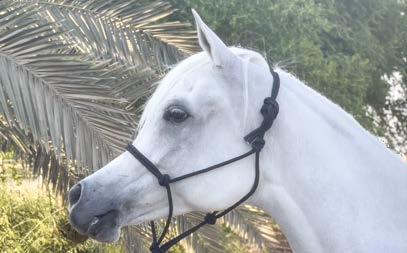
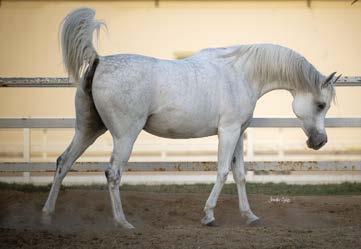
Visible Results of Nutritional Rebalancing Improved Topline Development, Enhanced Hair Quality, and Reduction of Metabolic Fat lumps. Following 3–6 Months on a Corrected Feeding
harder and longer just to burn it off often in tight round pens or repetitive circles and that kind of pressure on young, growing joints is completely counterproductive. It builds tension instead of balance and can cause long-term joint stress and lameness in
horses that should still be developing gently. It’s one of the reasons we’re seeing far more lame horses in the show ring today, horses pushed beyond what their young joints can bear simply because of the way they’re fed. It’s exactly the same principle athletes use,

a bodybuilder doesn’t live on bread and cereal. He eats protein, fish, chicken, eggs, and greens in order to develop strength without bulk. Horses are no different. When you fuel the body correctly, you build form without force.
For horses that are stabled for long hours, feeding four times a day helps enormously. Smaller, more frequent meals mimic the natural grazing rhythm and keep the gut stable.
There are now some excellent grain-free feeds available that support this system beautifully, including CEN Nutrition, St. Hippolyt, and Purina grain-free options.
At our stables in Qatar, we’ve settled on a balanced, grain-free routine that keeps horses calm, strong, and naturally conditioned:
• Feed frequency: Four times per day to mirror natural grazing.
• Base feed: A quality grain-free pellet with a combination of sugar + starch under 15% (ideally 10%).
• Protein topper: St. Hippolyt RiceLein — low in sugar, supports muscle and topline.
• Oil: CEN Oil, (cold pressed Linseed) 50 ml per day, for natural energy and coat health.
• Forage: Washed rhodes grass our local

hay fed ad libitum for constant fibre and hydration.
Avoid soybean-based feeds and vegetable oils such as corn or soy oils. Their inflammatory profile works directly against joint and reproductive health. Once you eliminate them, you’ll often see the parotid swelling disappear within weeks, proof that less really is more.
I’ve learned that the answers don’t lie in the latest supplement or feeding trend, but in going backward, back to the desert, to simplicity, to the origin of the breed itself. These horses evolved on scarcity and resilience. When we feed them according to that truth, everything else, conformation, behavior, fertility, soundness, all begins to align. The Straight Egyptian Arabian does not need modern correction. It needs ancient wisdom. And in the quiet mornings, when I watch a newborn foal stand for the first time, straight, sure, and strong I know we’ve finally come home to what the desert always knew. There are now some excellent grainfree feeds available that support this system beautifully, including CEN Nutrition, St. Hippolyt, and Purina grain-free options.
Jennifer Ogden manages Straight Egyptian Arabian horses in Qatar for several private studs. She is recognized for her expertise in equine nutrition, holistic healing, and natural management, she holds a degree in Equine Business Management and Equine Nutrition from Hawkesbury Agricultural College (now the University of Western Sydney). She provides specialized equine consultancy services encompassing Equine Nutrition, Horse Psychology, Barn Management, Breeding Selections, and more. Recognized for her expertise in holistic healing and natural management, she continues to champion sustainable, evidencebased approaches tailored to the desert environment and the unique physiology of the Straight Egyptian Arabian. Beyond her work as a horsewoman, Jennifer is also an accomplished equine photographer, known for capturing the spirit, movement, and purity of the Arabian horse through her lens. Her work combines art and understanding — a reflection of her life among the horses she so deeply respects.
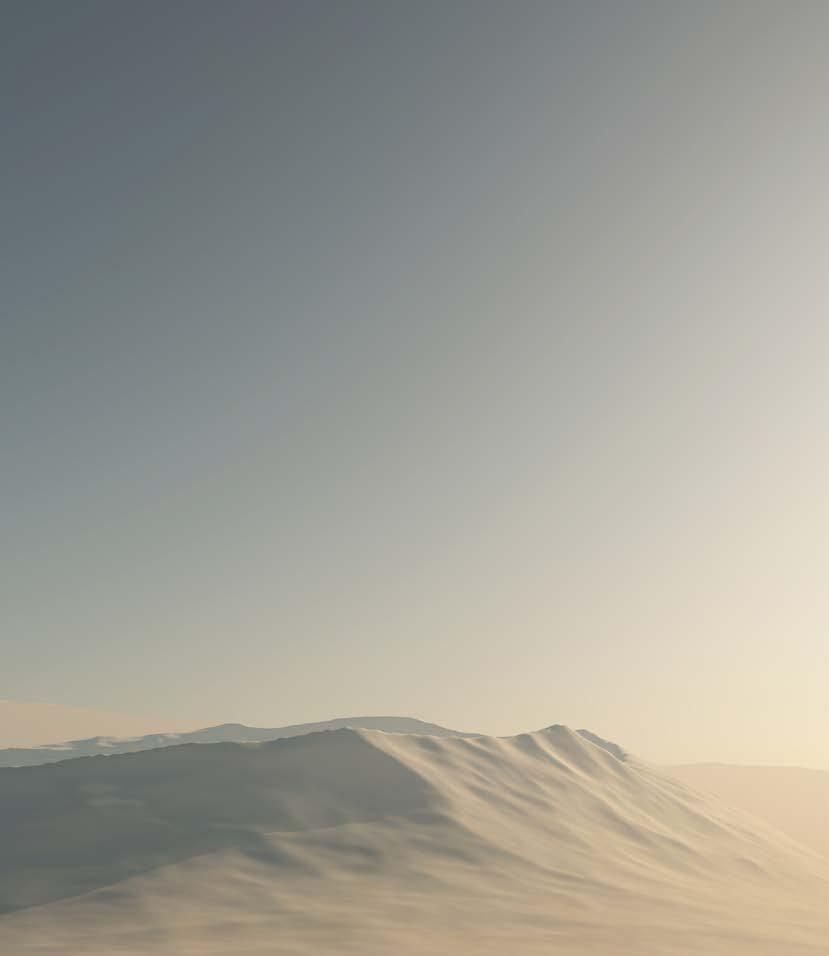
by Joseph Ferriss
Article published with the kind permission of ArAbiAn EssEncE
I recall in the 1970s that a certain level of “celebrity” became associated with the Dahman Shahwan strain. It had become much admired, largely through the popularity of the beloved stallion Ansata Ibn Halima. The strain had already been in the U.S. for a long time established in Egyptian lines by Mr. Babson’s imported mare Bint Bint Sabbah. Her dam line produced some quality champions over the years. Bint Bint Sabbah’s handsome sons, Khebir, Fasaab and Fabah were muchadmired sires and many of her daughters founded important families. When Ansata Ibn Halima arrived on the scene, he crossed well with the tail female Bint Bint Sabbah horses, which included the recipe of the renowned “Nile family.” When the splendid Ansata Bint Bukra arrived, another celebrity for the Dahman Shahwan debuted. The contribution of these individuals, while not the only representatives Dahman Shahwan, created a dynasty and in some ways also created an image in the minds of many as to what the
Dahman Shahwan should look like: ideal size, not too big not too small, balanced bodies, clean limbs of just the right proportions, relatively short backs, arched tails, gracefully arched necks, beautiful heads, not too long-not too short, large eyes and wonderful temperament. It sounds like the description of the ideal Arabian horse, almost like the rulebook standard drawing of an Arabian. Indeed many of this strain (though not all) seemed to follow more or less the “rule book” standard look. In my youth I figured it must have something to do with El Dahma, the 1880 mare, a root mare this strain in Egyptian breeding. It was just an assumption that I had for many years without looking into it further. However, as I traveled over the years I began to realize that the Dahman Shahwan strain, like all other strains, could come in a variety of shapes, sizes and colors. So what role does El Dahma play in Egyptian bloodlines other than just a famous female line?
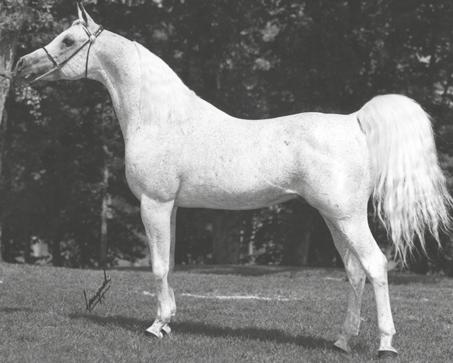
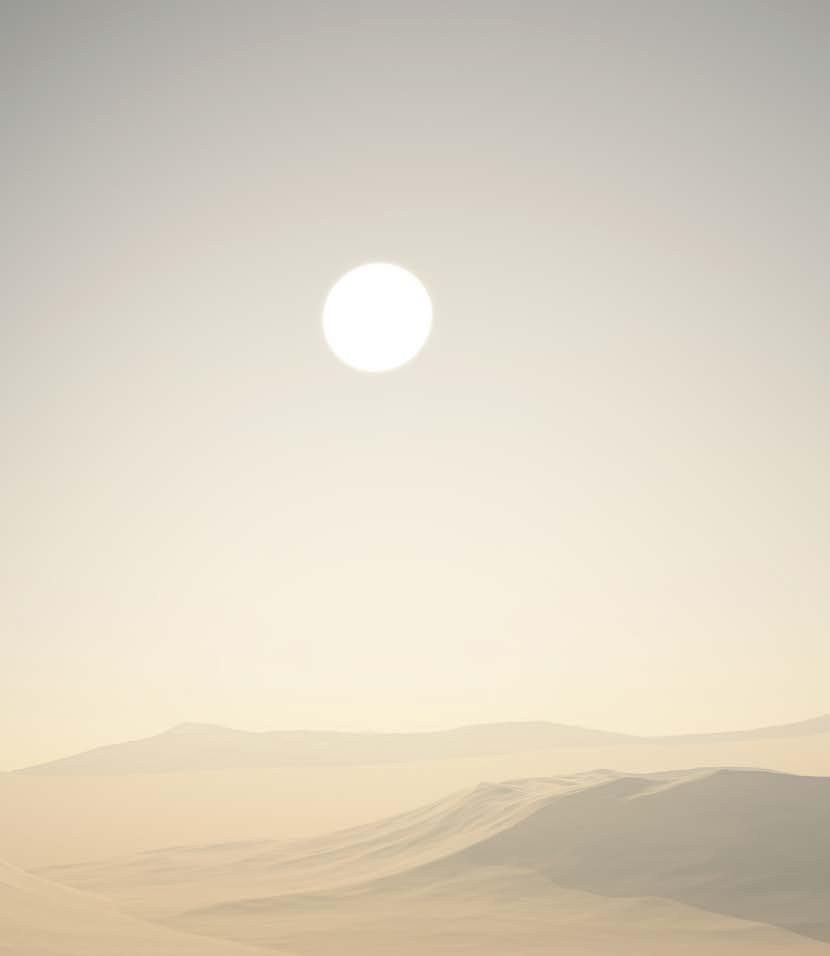


El Dahma was a mare in the stud of legendary breeder Ali Pasha Sherif born around 1880. There is some speculation based on Lady Anne Blunt’s writing that El Dahma descends from Abbas Pasha stock. We don’t know for sure how many foals she had in her lifetime but she was at some point given by Ali Pasha Sherif to Khedive Tewfik, ruler of Egypt at the time. The Khedive produced her daughter Nadra El Khebira at his stud. The Khedive’s son, Khedive Abbas II inherited
Fa Sherifaa
(Ansata El Sherif x Faserrabba) 1985 grey mare representing the ideal blending of three famous lines to El Dahma, Ansata Ibn Halima, Ansata Bint Bukra and Bint Bint Sabbah. Randi Clark photo.

Fa Halima (Ansata Ibn Halima x Sabrah) 1970 grey mare
U.S. National Champion mare and Paris Reserve World Champion mare. A popular blend of Mr. Babsons Dahman Shahwan mare Bint Bint Sabbah with Ansata Ibn Halima. Johnny Johnston photo.
his father’s stud and under his involvement El Dahma’s next three foals were born. At some point later, all four of El Dahma’s produce would become a part of the breeding of the renowned Prince Mohammed Ali Tewfik. El Dahma’s four foals that have bred on in today’s Arabians are: Nadra El Khebira 1891 grey mare (x Nader El Khebir); Obeya, 1894 grey mare (x Koheilan El Mossen); Gazza, 1895 grey mare (x Saklawi I); Saklawi II, 1896 grey stallion (x Saklawi I).
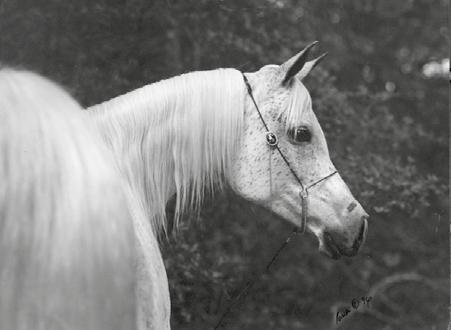
El Dahma’s daughter Nadra El Khebira is the grand dam of the celebrated mare Farida who has established a large family. Farida created female lines in Europe, via the famous German Weil-Marbach “M” family handed down from the lovely mares Malikah and Moheba II. Weil-Marbach also used the Farida blood via the mare Nadja of the Nefisa line. Another Farida family was established at Babolna in Hungary from the exceptional mare Bint Inas. In Egypt, Farida’s female line maintained a branch through such splendid
mares as Adaweya. The Nefisa line came to the U.S. in both Pritzlaff and Gleannloch Imports. Farida’s granddaughter the aged Ghazalahh, grandmother of Bint Inas, was imported to the U.S. by Gleannloch however did not produce there. Two other Farida female lines came to the U.S. via Ansata Bint Sameh and her ¾ sister Deenaa, known as the grand dam of legendary stallion Anaza El Farid. Of course Farida’s most world-renowned male descendant is Ansata Ibn Halima.
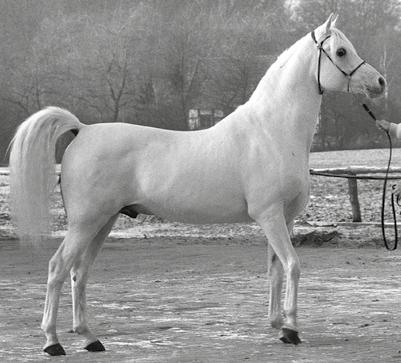
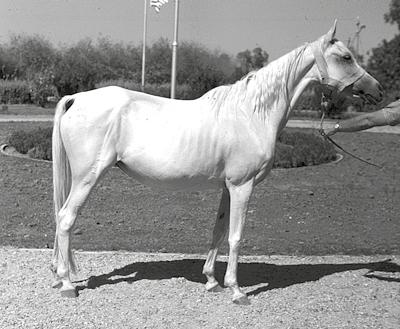
Madkour I (Hadban Enzahi x Moheba II) 1971 grey stallion representing the Farida line from the famous “M” family of Malacha. He is the sire of Jamilll. Judi Forbis photo.

Kamar (Nazeer x Komeira) 1953 grey mare, a beautiful mare and another admired branch of the original El Dahma, via Layla. Judi Forbis photo.
Ghazalahh (Mashhour x Bint Farida)
1951 grey mare, a truly magnificent mare founder of the Inas branch of El Dahma. Judi Forbis photo.

El Dahma’s daughter Obeya is the grand dam of the mare Sabah (with 2 lines to El Dahma), who became one of the most prolific female lines to El Dahma via her three grand daughters, Bint Bint Sabbah, Bukra, and Layla. Bint Bint Sabbah, the aforementioned Babson import, produced seven daughters, many found not only in Egyptian lines but also in other American bloodlines. She is the dam line of International Champion Fa Halima (x Ansata Ibn Halima), just one beautiful example of the ideal matching of the Halima
and Sabah blood. The beautiful Bukra produced Bint Bukra at the EAO and also Ansata Bint Bukra imported to the U.S. by Ansata and, in combination with Ansata Ibn Halima’s blood, founded a huge influence within Egyptian lines worldwide. Layla is revered as the female line of Europe’s magnificent Tamria line, from the beautiful mare Kamar. Because the Sabah branch of El Dahma is connected to so many females it has helped El Dahma become perhaps the largest mare line within straight Egyptian breeding.

Nazeer (Mansour x Bint Samiha) 1934 grey stallion, the most transformational sire in Arabian breeding since the Polish stallion Skowronek. Though Hadban Enzahi by strain, even Nazeer traces to El Dahma, through his grandsire Gamil Manial. Judi Forbis photo.
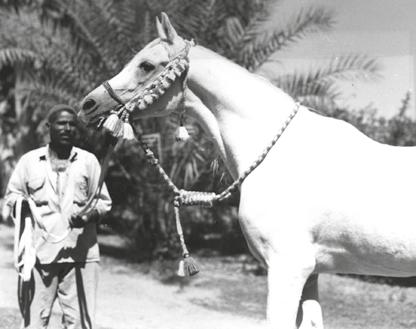
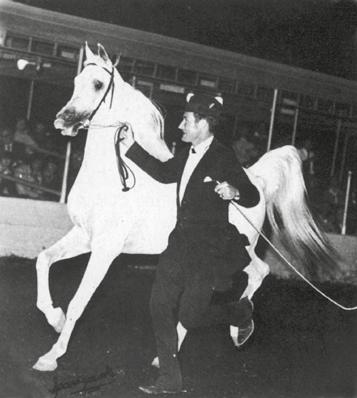

Morafic (Nazeer x Mabrouka) 1956 grey stallion, certainly the most exotic Nazeer son. Even though he is of the Saklawi Jidran strain Morafic carries 11 crosses to the original El Dahma, compared to Ansata Ibn Halima’s 7 crosses. Jerry Sparagowski photo.
Prince Fa Moniet (TheEgyptianPrince x Fa Moniet) 1981 grey stallion. A very prepotent sire. He not only carries 48 crosses to the original El Dahma of Ali Pasha Sherif but he carries a line to El Dahma’s daughter Ghazza via his granddam Fada. Jerry Sparagowski photo.

The line to Gazza is not found as a female line but rather through her grandson the bay stallion Bark, who is found in the pedigree of the Queen Mother’s stallion Ibn Farhan and also the imported Babson mare Bint Saada. Bint Saada produced no daughters that bred on but her son Faddan (x Fadl) is found in many prominent horses such a Prince Fa Moniet and Akid Geshan.
El Dahma’s only son is Saklawi II. While it has already been noted El Dahma’s female line is very prolific, what has further made her one of the most influential Egyptian mares of all time is the fact that her son Saklawi II is also the sire of two important stallions Mabrouk Manial, sire of numerous important mares, and Gamil Manial, grandsire of Nazeer.
Royal
Considering all this, one can easily see that there are many crosses to El Dahma in Egyptian pedigrees. Interestingly the famous and most exotic Nazeer son Morafic, a horse who is clearly much different in type than the other famous Nazeer son Ansata Ibn Halima, actually has more crosses to El Dahma than does Ansata Ibn Halima. Morafic has 11 lines to El Dahma. Ansata Ibn Halima has 7 lines to El Dahma. Because El Dahma comes down through Egyptian breeding in a variety of ways, she is in every Egyptian pedigree, and her role is very strong throughout Arabian breeding, much in the same way that the Blunt’s mare Rodania is found throughout Egyptian and Arabian breeding worldwide. By example, today just within straight Egyptian breeding the recent Paris World Champion Royal Colours carries 579 crosses to El Dahma. Even horses that are not straight Egyptian benefit considerably from El Dahma’s influence. Paris World Champion Pianissima has 71 crosses to El Dahma. Marwan Al Shaqab has 69 crosses to El Dahma, and WH Justice has 52 crosses to El Dahma.
There is no confirmed description about what El Dahma looked like herself, so we cannot make the sweeping judgment that there is a certain look to the El Dahma family. But it is clear by the huge family she has created that her role in Arabian breeding is enormous and her descendants will continue to be popular for a long time. So it is only fitting that we celebrate Egypt’s “first queen” El Dahma. q
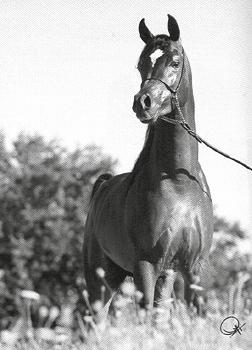







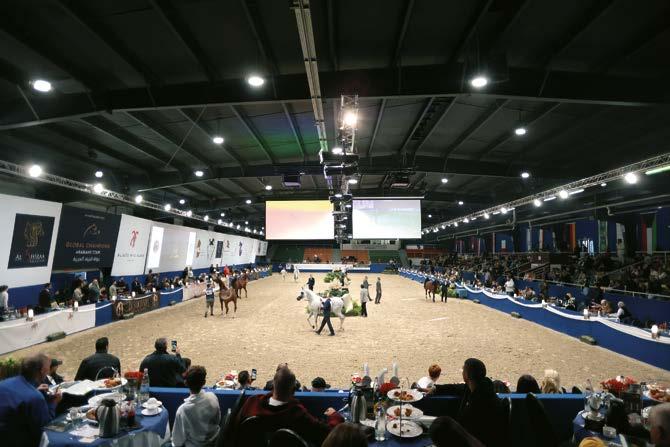


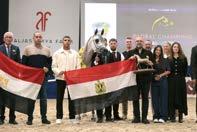
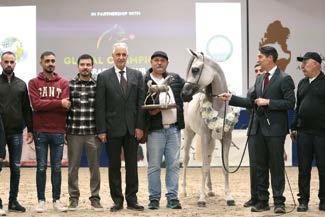
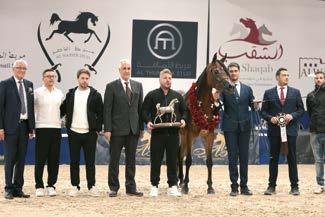





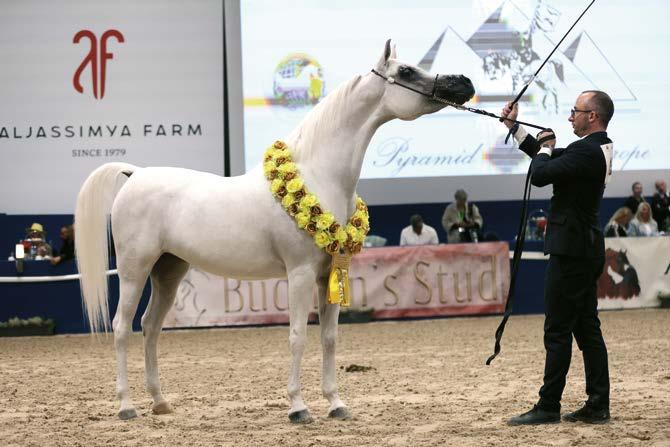
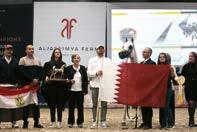



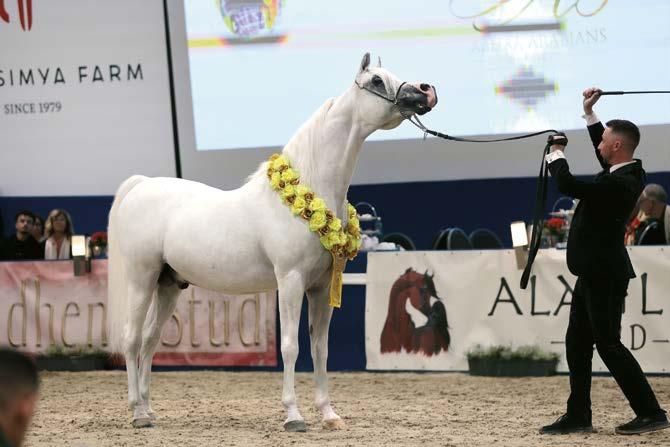


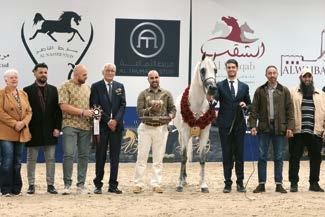


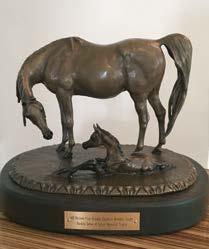

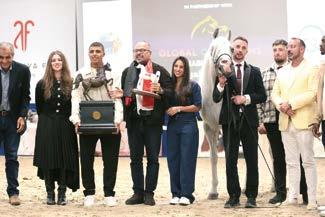


Dear Breeders and Owners of Straight Egyptian Arabian Horses from Italy who participated at the 6th All Nations CupStraight Egyptians on 27.-28.Sept. 2025
The organizing team of the 6th All Nations Cup - Straight Egyptians would like to congratulate you and the other breeders of SE Arabians for the great success their horses achieved not only for their farms and breeding programs, but also for the team of Italy.
With the Class winners, TOP 5 Places and Championship honours the Team of participating Breeders form Italy collected many points in the ANC - SE Breeders Trophy ranking. Often, they had equal points with the team from Egypt, another successful competing Breeder Nation at this event. Sometimes Egypt was in front, sometimes Italy.
At the end, we can announce, that Italy was the winner of the All-Nations Cup - Straight Egyptians Breeders Trophy, named ‘Sheikha Salwa Al Sabah –Memorial Trophy, with in total 40 points. Egypt took the second place with in total 37 points.
My respect and regards.
Klaus G. Beste
Member
of
the Organizing Team All Nations Cup – Aachen 2025


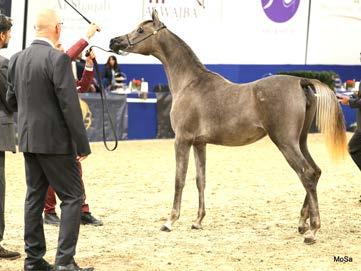
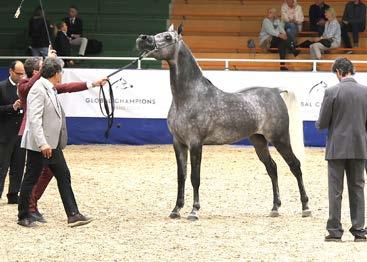

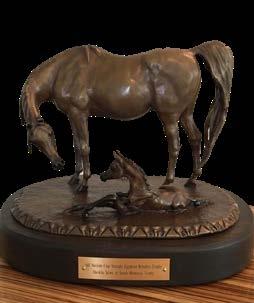


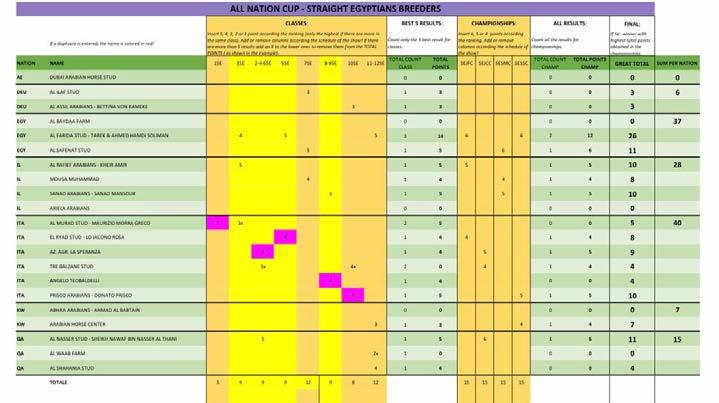

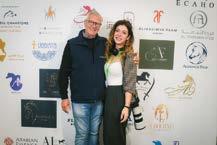

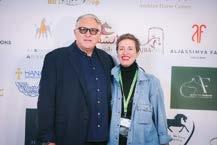

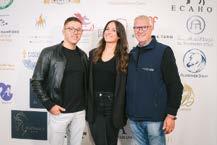
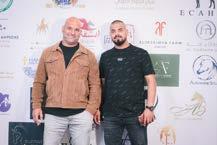


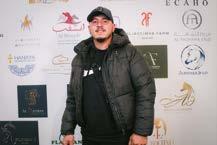




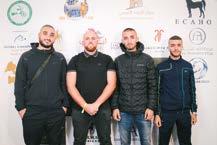












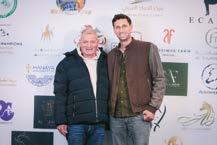
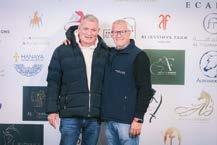

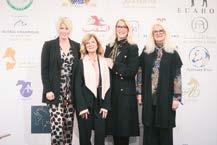

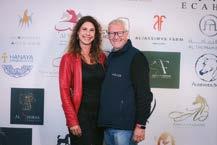




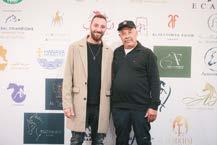







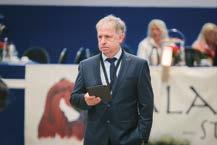





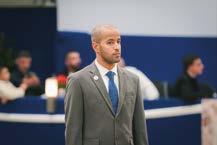





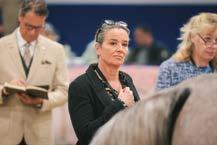




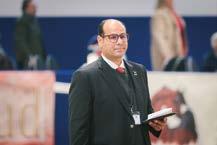

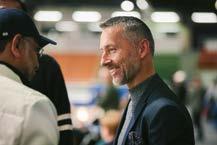



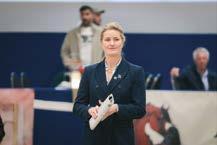





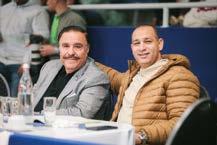
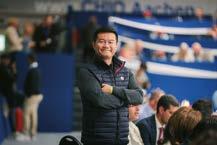

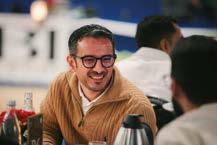
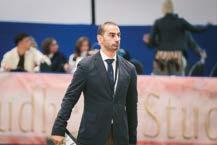





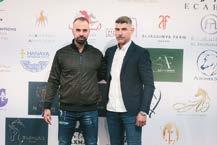





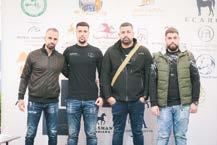

















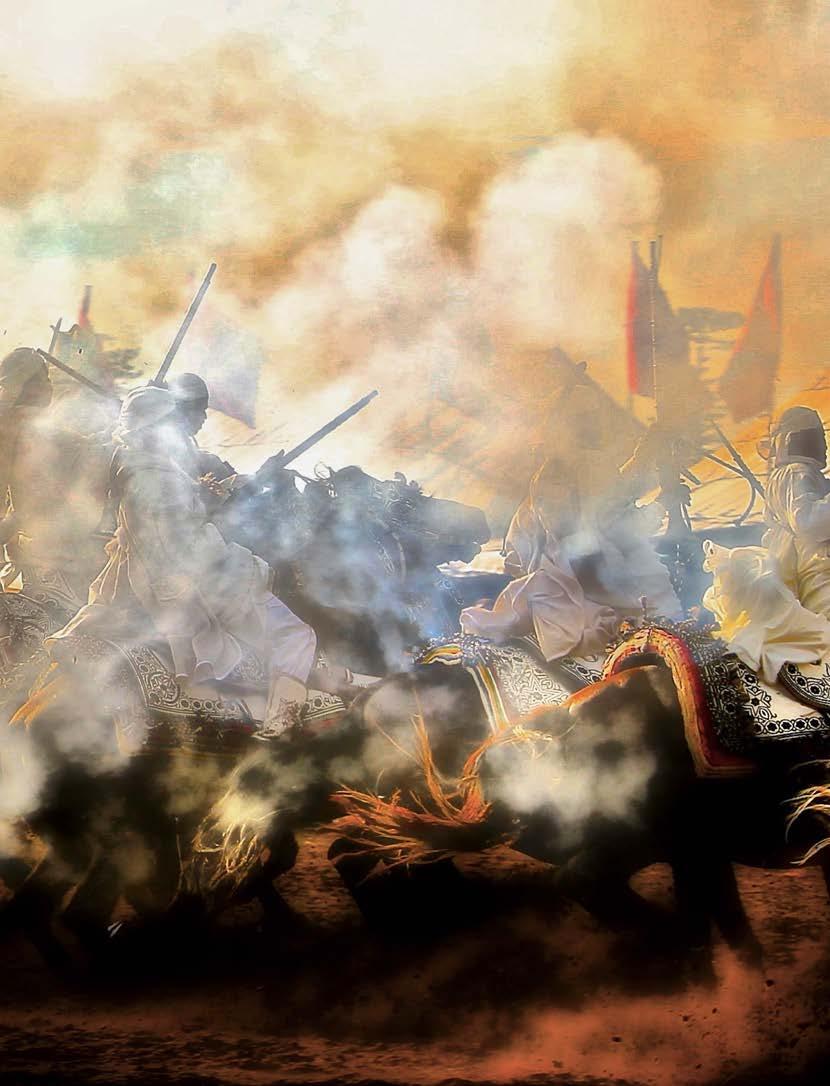



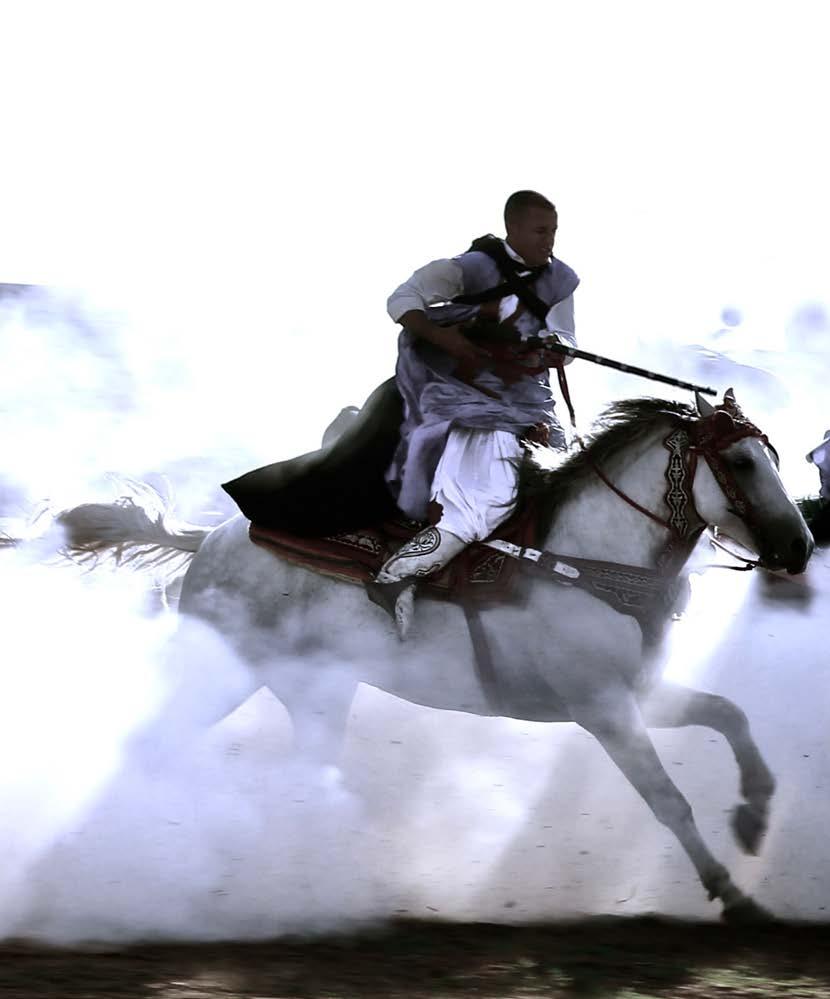
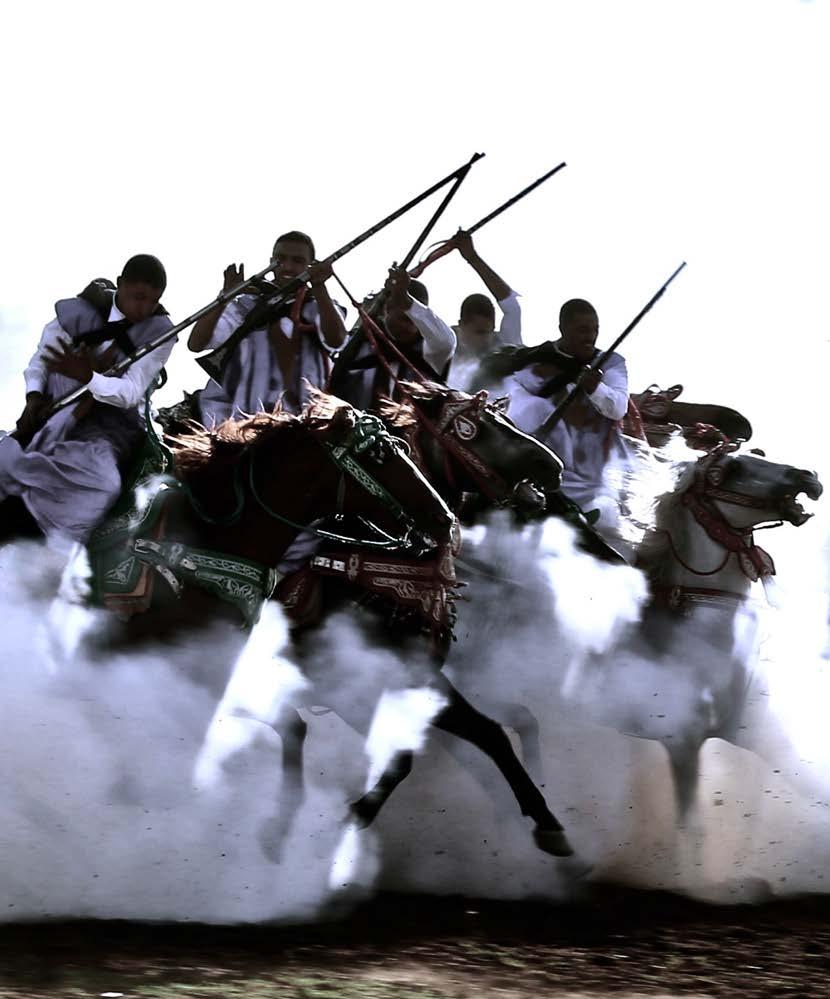
by Monika Savier, Leigh Jamieson
Photos: Erwin Escher, Gigi Grasso, Glenn Jacobs, Joanna Jonientz, Dr. Hans Nagel archive, Monika Savier, Rik van Lent Sr. and Jr.
“Every stallion I use needs to have outstanding potential for improving my breeding. You can’t always know that, sometimes you just have to give it a try”
(Dr. Hans Nagel, 2003, Katharinenhof)
All his life, the stallion Salaa El Dine (1983 –2007) had a private as well as a public function. The private one was his role as Chief Sire Number One at Katharinenhof Stud, in Germany. The stallion was an im-portant element in the breeding concept of Dr. Nagel, for many years and the cur-rent President of the World Arabian Horse Organisation, “WAHO“. From an early stage, Dr. Nagel had translated his passion for Arabian horses into a strategy. He was determined to fulfil a desire of his, planning to maintain the famous but critically en-dangered horse population of the Arabian peoples in the South of the Arabian pen-insula, the Nejd region, and to revive the breed in his stud. Salaa El Dine, one of the “essential elements” of this genetic concept, was greatly successful in living up to that role. Even whilst alive, he became hugely popular – without ever having made an ap-pearance at an Arabian show. His excellent offspring more than served to establish his fame in five continents.
His public function as a sire – with his gene pool used by mare owners from many coun-tries, all trying to achieve successes similar to those his breeder Dr. Nagel had achieved - was marked by great and small successes, as well as occasional failures, just as is the case with all publicly serving sires. Salaa El Dine was, however, by no means a closed book, as there were detailed “directions for his use” to be read in Dr. Nagel’s book “Hanan, the Story of an Arabian Mare”, which was written in the 1990’s and was precise and fitting on the subject of Salaa El Dine.
Salaa El Dine was something special. In contrast to most famous stallions, he was neither a projection of the vanities of his owner, nor a money making vehicle, and he was also not just a lucky strike. He was the last foal of Hanan and was sired by Ansa-ta Halim Shah, destined for a special role in the longterm experiment taking place at Dr. Nagel’s Katharinenhof Stud located near
Bremen in Northern Germany.
At the beginning of the 1970’s, Dr. Nagel imported his exotic foundation mare Hanan and three other mares, but with less influ-ence, from El Zahraa near Cairo, taking a circuitous route to Germany via Babolna in Hungary, and founding Katharinenhof stud with them. Hanan’s first foal, Ibn Galal I by Ibn Galal, was born in 1972 while she was still stabled in Hungary. She produced 11 foals in all, three of whom have made priceless contributions, not only to the fu-ture of Katharinenhof, but also to Straight Egyptians throughout the world. These three horses were Ghazala (by the Bukra son Ghazal), Jamil (by Madkour I), and Salaa El Dine (by the peerless Ansata Halim Shah).
Two other Madkour 1 daughters, Arussa and Ameera, made significant but lesser con-tributions, and two other sons - Ibn Galal I (by Ibn Galal) and Asfour (by Malik) - be-came great sires at their

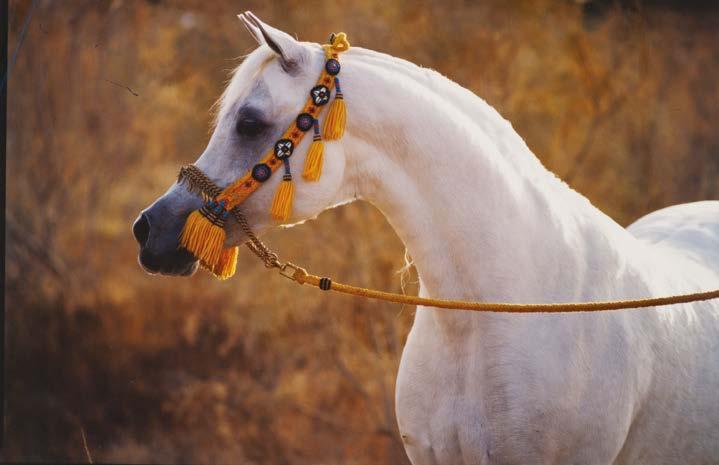


Two other Madkour 1 daughters, Arussa and Ameera, made significant but lesser con tributions, and two other sons - Ibn Galal I (by Ibn Galal) and Asfour (by Malik) - be came great sires at their respective stud farms of Babolna in Hungary and Simeon Stud in Australia. That means that at least 7 out of her 11 foals became outstanding horses and breeding animals – a record surely un matched by any other mare in history.

El Dine (1956, Nazeer x Kateefa)
In addition to Hanan’s Obeyyan line, one of the other strains that interested Dr. Nagel was the Dahman Shahwan line of the mare Bukra, but there were no suitable horses of that family left in El Zahraa, the best mares having been imported into the
In the course of time, Dr. Nagel realized certain improvements needed to be made in his breeding programme in order to
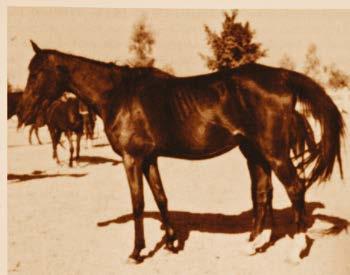
El Dine (1956, Nazeer x Kateefa) Mona (1956, Badr x Mahdia)
respective stud farms of Babolna in Hungary and Simeon Stud in Australia. That means that at least 7 out of her 11 foals became outstanding horses and breeding animals – a record surely unmatched by any other mare in history.
In addition to Hanan’s Obeyyan line, one of the other strains that interested Dr. Nagel was the Dahman Shahwan line of the mare Bukra, but there were no suitable horses of that family left in El Zahraa, the best mares having been
imported into the USA by Judith Forbis.
In the course of time, Dr. Nagel realized certain improvements needed to be made in his breeding programme in order to reach his goal. He had been able to



search through many Arabian countries, through the USA and Europe, and had defined his breeding goal according to what he had seen. He had a clear mental picture of the standard he was aspiring to, and for him, the only horses that came close to the ideal he was seeking were to be found at El Zah-raa, but he definitely wanted to arrive at his goal, and he would not leave anything to chance until he had reached that ideal. So he wanted his Arabian horses to have the following features:
• they must have a chiselled Arabian face with big black eyes and black skin,
reach his goal. He had been able to search through many Arabian countries, through the USA and Europe, and had defined his breeding goal according to what he had seen. He had a clear mental picture of the standard he was aspiring to, and for him, the only horses that came close to the ideal he was seeking were to be found at El Zahraa, but he definitely wanted to arrive at his goal, and he would not leave anything to chance until he had reached that ideal. So he wanted his Arabian horses to have the following features:
friendly character.
reach his goal. He had been able to search through many Arabian countries, through the USA and Europe, and had defined his breeding goal according to what he had seen. He had a clear mental picture of the standard he was aspiring to, and for him, the only horses that came close to the ideal he was seeking were to be found at El Zahraa, but he definitely wanted to arrive at his goal, and he would not leave anything to chance until he had reached that ideal. So he wanted his Arabian horses to have the following features:
reach his goal. He had been able to search through many Arabian countries, through the USA and Europe, and had defined his breeding goal according to what he had seen. He had a clear mental picture of the standard he was aspiring to, and for him, the only horses that came close to the ideal he was seeking were to be found at El Zahraa, but he definitely wanted to arrive at his goal, and he would not leave anything to chance until he had reached that ideal. So he wanted his Arabian horses to have the following features:
• they must have good tail carriage, elevated during every movement,
• they must have very good move-ment, and
• they must have a docile and friendly character.
• they must have a chiselled Arabian face with big black eyes and black skin,
• they must have a chiselled Arabian face with big black eyes and black skin,
• they must have a chiselled Arabian face with big black eyes and black skin,
He intended to improve the body overall as well, having become aware that his breed-ing stock could do with a better croup and shoulder. Based on that assessment, he re-alised that not only did some of his horses require improvement in these areas, but that it was a general
• they must have good tail carriage, elevated during every movement,
• they must have good tail carriage, elevated during every movement,
• they must have good tail carriage, elevated during every movement,
• they must have very good movement, and
• they must have a docile and
• they must have very good movement, and
• they must have very good movement, and
• they must have a docile and
• they must have a docile and
friendly character.
friendly character.
He intended to improve the body overall as well, having become aware that his breeding stock could do with a better croup and shoulder. Based on that assessment, he realised that not only did some of his horses require improvement in these areas, but that it was a general problem of most of the Egyptian horses. His logical conclusion was to start a systematic search for a stallion who was able to improve these aspects, finding him in 1983 in the two yearold Ansata Halim Shah of Judith Forbis’ Ansata Stud in the USA. He brought him to Katharinenhof Stud for two years, and, in exchange, sent Jamil, the son of Hanan and Madkour I, to the US. The decision was a milestone in Egyptian Arabian horse breeding, and the results were to change the looks of Egyptian Arabians throughout the world.
He intended to improve the body overall as well, having become aware that his breeding stock could do with a better croup and shoulder. Based on that assessment, he realised that not only did some of his horses require improvement in these areas, but that it was a general problem of most of the Egyptian horses. His logical conclusion was to start a systematic search for a stallion who was able to improve these aspects, finding him in 1983 in the two yearold Ansata Halim Shah of Judith Forbis’ Ansata Stud in the USA. He brought him to Katharinenhof Stud for two years, and, in exchange, sent Jamil, the son of Hanan and Madkour I, to the US. The decision was a milestone in Egyptian Arabian horse breeding, and the results were to change the looks of Egyptian Arabians throughout the world.
problem of most of the Egyptian horses. His logical conclu-sion was to start a systematic search for a stallion who was able to improve these as-pects, finding him in 1983 in the two year-old Ansata Halim Shah of Judith Forbis’ Ansata Stud in the USA. He brought him to Katharinenhof Stud for two years, and, in exchange, sent Jamil, the son of Hanan and Madkour I, to the US. The decision was a milestone in Egyptian Arabian horse breeding, and the results were to change the looks of Egyptian Arabians throughout the world.
Jamil was intended to be the perfect
He intended to improve the body overall as well, having become aware that his breeding stock could do with a better croup and shoulder. Based on that assessment, he realised that not only did some of his horses require improvement in these areas, but that it was a general problem of most of the Egyptian horses. His logical conclusion was to start a systematic search for a stallion who was able to improve these aspects, finding him in 1983 in the two yearold Ansata Halim Shah of Judith Forbis’ Ansata Stud in the USA. He brought him to Katharinenhof Stud for two years, and, in exchange, sent Jamil, the son of Hanan and Madkour I, to the US. The decision was a milestone in Egyptian Arabian horse breeding, and the results were to change the looks of Egyptian Arabians throughout the world.

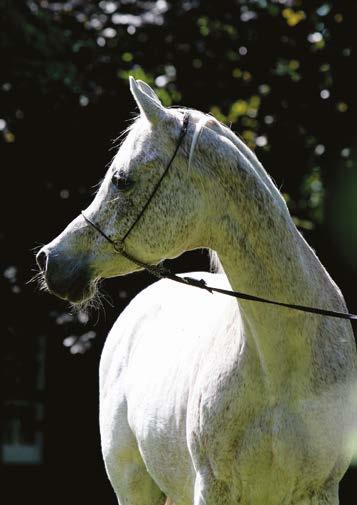
Jamil was intended to be the perfect match for the Katharinenhof mares after returning from America, but he died young and mysteriously. So once again, Dr. Nagel needed to find a fitting stallion to replace his leading sire, when Hanan, who had been served by Ansata Halim Shah, gave birth to her last foal, little Salaa El Dine. Ansata Halim Shah, as well as his sire Ansata Ibn Halim, and his grandsire Nazeer were stallions who could produce good mares as well as good stallions. Later on, Salaa El Dine was to follow in those footsteps, proving to be an outstanding sire of offspring of both sexes, and these were soon to be found, not only at Katharinenhof Stud, but also outside of it. Few other stallion before him ever influenced overall breeding as extensively as he did. Having an outstanding Ansata Halim Shah son in Salaa El Dine to put over his mares,
Jamil was intended to be the perfect match for the Katharinenhof mares after returning from America, but he died young and mysteriously. So once again, Dr. Nagel needed to find a fitting stallion to replace his leading sire, when Hanan, who had been served by Ansata Halim Shah, gave birth to her last foal, little Salaa El Dine. Ansata Halim Shah, as well as his sire Ansata Ibn Halim, and his grandsire Nazeer were stallions who could produce good mares as well as good stallions. Later on, Salaa El Dine was to follow in those footsteps, proving to be an outstanding sire of offspring of both sexes, and these were soon to be found, not only at Katharinenhof Stud, but also outside of it. Few other stallion before him ever influenced overall breeding as extensively as he did. Having an outstanding Ansata Halim Shah son in Salaa El Dine to put over his mares,
match for the Katharinenhof mares after return-ing from America, but he died young and mysteriously. So once again, Dr. Nagel needed to find a fitting stallion to re-place his leading sire, when Hanan, who had been served by Ansata Halim Shah, gave birth to her last foal, little Salaa El Dine. Ansata Halim Shah, as well as his sire Ansata Ibn Halim, and his grandsire Nazeer were stallions who could produce good mares as well as good stallions. Lat-er on, Salaa El Dine was to follow in those footsteps, proving to be an outstanding sire of offspring of both sexes, and these were soon to be found, not only at Katharinen-hof Stud,
Dr. Nagel made a decision not to double up on mares with Ansata Halim Shah blood, but, rather, to put Salaa El Dine over Jamil daughters, as he believed that Jamil’s daughters would be perfectly complemented by the infusion of Ansata Halim Shah blood. In order to fix the superb type of Hanan’s sons and daughters, Dr. Nagel experimented with putting Hanan’s sons over Hanan’s daughters, initially using Jamil, and after his death, Salaa El Dine. The results were astonishing. To Ameera, he produced Nahaman, a handsome steel grey stallion whose grey daughter NK Nabeelah (out of Nashua) was a leading broodmare at Katharinenhof until her untimely death in 2011. Her full sister, the lovely bay Bint Nashua, is an important broodmare for the El Adiyat Stud of Mahmood Al Zubaid in Kuwait. To Ghazala, Salaa El Dine produced the magnificent grey stallion Adnan,
but also outside of it. Few other stallion before him ever influenced overall breeding as extensively as he did.
Having an outstanding Ansata Halim Shah son in Salaa El Dine to put over his mares, Dr. Nagel made a decision not to dou-ble up on mares with Ansata Halim Shah blood, but, rather, to put Salaa El Dine over Jamil daughters, as he believed that Jamil’s daughters would be perfectly com-plemented by the infusion of Ansata Halim Shah blood. In order to fix the superb type of Hanan’s sons and daughters, Dr. Nagel experimented with putting Hanan’s
Dr. Nagel made a decision not to double up on mares with Ansata Halim Shah blood, but, rather, to put Salaa El Dine over Jamil daughters, as he believed that Jamil’s daughters would be perfectly complemented by the infusion of Ansata Halim Shah blood. In order to fix the superb type of Hanan’s sons and daughters, Dr. Nagel experimented with putting Hanan’s sons over Hanan’s daughters, initially using Jamil, and after his death, Salaa El Dine. The results were astonishing. To Ameera, he produced Nahaman, a handsome steel grey stallion whose grey daughter NK Nabeelah (out of Nashua) was a leading broodmare at Katharinenhof until her untimely death in 2011. Her full sister, the lovely bay Bint Nashua, is an important broodmare for the El Adiyat Stud of Mahmood Al Zubaid in Kuwait. To Ghazala, Salaa El Dine produced the magnificent grey stallion Adnan,
sons over Hanan’s daughters, initially using Ja-mil, and after his death, Salaa El Dine. The results were astonishing. To Ameera, he produced Nahaman, a handsome steel grey stallion whose grey daughter NK Nabeelah (out of Nashua) was a leading broodmare at Katharinenhof until her untimely death in 2011. Her full sister, the lovely bay Bint Nashua, is an important broodmare for the El Adiyat Stud of Mahmood Al Zubaid in Kuwait. To Ghazala, Salaa El Dine pro-duced the magnificent grey stallion Adnan,
whose daughters are revered and much
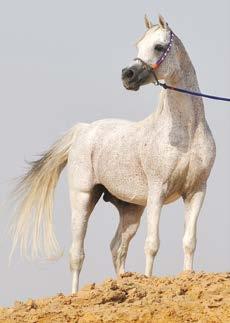

sought after around the world today. Nashua (Salaa El Dine x Lotfeia) pro-duced a series of lovely fillies by Nahaman, of which NK Nabeelah and Bint Nashua were the pick. She also nicked brilliantly with the Salaa El Dine son Adnan to pro-duce three exquisite grey daughters in NK Nasrin, NK Nadirah and N.K. Nada. Both NK Nasrin and NK Nadirah have been retained by Dr. Nagel and are prob-ably his best broodmares. N.K. Nada went to the very impressive Ezzain Stud of Usamah Al Kazemi in Kuwait, and was sold recently for a king’s ransom to Al Wahab Stud in Qatar. Nashwa became an outstanding broodmare for the tastefully de-signed and beautifully laid out Ajmal Stud of Mohammed J.K. Al Marzouk in Kuwait. We need, at this point, to step back in time to Salaa El Dine, and to examine the in-fluence that this stallion has had on both Katharinenhof and on a world wide basis. Here, we can only deal with his influence on the future of
whose daughters are revered and much sought after around the world today.
Katharinenhof, but it should be pointed out that he was also the sire of many outstanding horses for other breeders around the world, such as RN Farida (from the Hadban Enzahi daugh-ter Noha), one of the most beautiful mares ever born, and the signature mare at Al Rayyan Farm in Qatar. RN Farida is also the dam of the superlative young sire Safir Al Rayyan by Ashhal Al Rayyan, a grand-son of Salaa El Dine.
Salaa El Dine only sired 54 foals for Dr. Nagel, but what a list it was! Nejdy, Nahaman, Adnan, and so on. Apart from the impossibly beautiful three daughters from Nashua already mentioned, Adnan sired other lovely mares in NK Yasmin (out of Helala, and now at Ezzain Stud in Kuwait), NK Hallah (out of Asfoura, and now at El Adiyat Stud in Kuwait), Samsara Nihal (out of Assal, and now at Seven Oaks Ara-bians in Australia), and Asma Bint Asfou-ra (out of Asfoura, and bred by Annette Hedley of Briery
whose daughters are revered and much sought after around the world today. Nashua (Salaa El Dine x Lotfeia) produced a series of lovely fillies by Nahaman, of which NK Nabeelah and Bint Nashua were the pick. She also nicked brilliantly with the Salaa El Dine son Adnan to produce three exquisite grey daughters in NK Nasrin, NK Nadirah and N.K. Nada. Both NK Nasrin and NK Nadirah have been retained by Dr. Nagel and are probably his best broodmares. N.K. Nada went to the very impressive Ezzain Stud of Usamah Al Kazemi in Kuwait, and was sold recently for a king’s ransom to Al Wahab Stud in Qatar. Nashwa became an outstanding broodmare for the tastefully designed and beautifully laid out Ajmal Stud of Mohammed J.K. Al Marzouk in Kuwait. We need, at this point, to step back in time to Salaa El Dine, and to examine the influence that this stallion has had on both Katharinenhof and on a world wide basis. Here, we can only deal with his influence on the future of Katharinenhof, but it should be pointed out that he was also the sire of many outstanding horses for other breeders around the world, such as RN Farida (from the Hadban Enzahi daughter Noha), one of the most beautiful mares
Nashua (Salaa El Dine x Lotfeia) produced a series of lovely fillies by Nahaman, of which NK Nabeelah and Bint Nashua were the pick. She also nicked brilliantly with the Salaa El Dine son Adnan to produce three exquisite grey daughters in NK Nasrin, NK Nadirah and N.K. Nada. Both NK Nasrin and NK Nadirah have been retained by Dr. Nagel and are probably his best broodmares. N.K. Nada went to the very impressive Ezzain Stud of Usamah Al Kazemi in Kuwait, and was sold recently for a king’s ransom to Al Wahab Stud in Qatar. Nashwa became an outstanding broodmare for the tastefully designed and beautifully laid out Ajmal Stud of Mohammed J.K. Al Marzouk in Kuwait. We need, at this point, to step back in time to Salaa El Dine, and to examine the influence that this stallion has had on both Katharinenhof and on a world wide basis. Here, we can only deal with his influence on the future of Katharinenhof, but it should be pointed out that he was also the sire of many outstanding horses for other breeders around the world, such as RN Farida (from the Hadban Enzahi daughter Noha), one of the most beautiful mares
ever born, and the signature mare at Al Rayyan Farm in Qatar. RN Farida is also the dam of the superlative young sire Safir Al Rayyan by Ashhal Al Rayyan, a grandson of Salaa El Dine.
ever born, and the signature mare at Al Rayyan Farm in Qatar. RN Farida is also the dam of the superlative young sire Safir Al Rayyan by Ashhal Al Rayyan, a grandson of Salaa El Dine.
Close Stud in U.K.). He also sired the colt Mubarak (1990 – 2012) out of the Obayyan mare Myrna, who ar-rived in Iran as a gift to the breeder Mrs. Mary Gharagozlou. During his lifetime, he produced more than 1000 foals, giving to the Iranian Asil Arabs a better type. Also, many of his offspring had enormous suc-cess on the racetracks and showgrounds in the country.
1992 was another defining year at Kath-arinenhof, as this saw the birth of Helala, by Salaa El Dine out of the Jamil daughter Ansata Gloriana. Dr. Nagel acquired two Dahman mares from Ansata Stud, being the Jamil daughter Ansata Gloriana, and, at a later point, Ansata Ken Ranya, who was by Salaa El Dine out of the Jamil daughter, Ansata Prima Rose.
In 1993, Salaa El Dine’s best foal was prob-ably Nour, a grey filly who became an im-portant broodmare at the Samsara
Salaa El Dine only sired 54 foals for Dr. Nagel, but what a list it was! Nejdy, Nahaman, Adnan, and so on. Apart from the impossibly beautiful three daughters from Nashua already mentioned, Adnan sired other lovely mares in NK Yasmin (out of Helala, and now at Ezzain Stud in Kuwait), NK Hallah (out of Asfoura, and now at El Adiyat Stud in Kuwait), Samsara Nihal (out of Assal, and now at Seven Oaks Arabians in Australia), and Asma Bint Asfoura (out of Asfoura, and bred by Annette Hedley of Briery Close Stud in U.K.). He also sired the colt Mubarak (1990 – 2012) out of the Obayyan mare Myrna, who arrived in Iran as a gift to the breeder Mrs. Mary Gharagozlou. During his lifetime, he produced more than 1000 foals, giving to the Iranian Asil Arabs a better type. Also, many of his offspring had enormous success on the racetracks and showgrounds in the country.
Salaa El Dine only sired 54 foals for Dr. Nagel, but what a list it was! Nejdy, Nahaman, Adnan, and so on. Apart from the impossibly beautiful three daughters from Nashua already mentioned, Adnan sired other lovely mares in NK Yasmin (out of Helala, and now at Ezzain Stud in Kuwait), NK Hallah (out of Asfoura, and now at El Adiyat Stud in Kuwait), Samsara Nihal (out of Assal, and now at Seven Oaks Arabians in Australia), and Asma Bint Asfoura (out of Asfoura, and bred by Annette Hedley of Briery Close Stud in U.K.). He also sired the colt Mubarak (1990 – 2012) out of the Obayyan mare Myrna, who arrived in Iran as a gift to the breeder Mrs. Mary Gharagozlou. During his lifetime, he produced more than 1000 foals, giving to the Iranian Asil Arabs a better type. Also, many of his offspring had enormous success on the racetracks and showgrounds in the country.
1992 was another defining year at Katharinenhof, as this saw the birth of Helala, by Salaa El Dine out of the Jamil daughter
1992 was another defining year at Katharinenhof, as this saw the birth of Helala, by Salaa El Dine out of the Jamil daughter

Ansata Gloriana. Dr. Nagel acquired two Dahman mares from Ansata Stud, being the Jamil daughter Ansata Gloriana, and, at a later point, Ansata Ken Ranya, who was by Salaa El Dine out of the Jamil daughter, Ansata Prima Rose.
Dr. Nagel acquired two Dahman mares from Ansata Stud, being the Jamil daughter Ansata Gloriana, and, at a later point, Ansata Ken Ranya, who was by Salaa El Dine out of the Jamil daughter, Ansata Prima Rose.
Stud of Donald Duke in the U.K. In 1995 the lovely grey Sanaya daughter NK Layla was born, and another birth was the stunning grey full sister to Helala, Ansata Helwa, who became an important broodmare, in-itially for Omar Sakr in Egypt, and thereaf-ter for Al Khaled Farm in Saudi Arabia. Fi-nally, the incomparable NK Nariman (out of the Jamil/Ghazala daughter Amarilla) was born. NK Nariman is the dam of some wonderful foals, mainly sired by NK Hafid Jamil. These include the mares NK Jurie and NK Lolowah (both at the Ezzain Stud of Usamah Al Kazemi in Kuwait), and the brilliant grey stallion NK Qaswarah, who is siring truly astonishing foals of both sex-es at Ezzain Stud, and NK Nessma (at the U.K. Stud of Hassanain Al Nakeeb). NK Nariman’s last foal, NK Ninnifee, born in 2007, is an extremely beautiful and elegant young mare by Jamal El Dine and she has been retained by Dr. Nagel, and produced a stunning 2012 colt by
In 1993, Salaa El Dine’s best foal was probably Nour, a grey filly who became an important broodmare at the Samsara Stud of Donald Duke in the U.K. In 1995 the lovely grey Sanaya daughter NK Layla was born, and another birth was the stunning grey full sister to Helala, Ansata Helwa, who became an important broodmare, initially for Omar Sakr in Egypt, and thereafter for Al Khaled Farm in Saudi Arabia. Finally, the incomparable NK Nariman (out of the Jamil/Ghazala daughter Amarilla) was born. NK Nariman is the dam of some wonderful foals, mainly sired by NK Hafid Jamil. These include the mares NK Jurie and NK Lolowah (both at the Ezzain Stud of Usamah Al Kazemi in Kuwait), and the brilliant grey stallion NK Qaswarah, who is siring truly astonishing foals of both sexes at Ezzain Stud, and NK Nessma (at the U.K. Stud of Hassanain Al Nakeeb). NK Nariman’s last foal, NK Ninnifee, born in 2007, is an extremely beautiful and elegant young mare by Jamal El Dine and she has
In 1993, Salaa El Dine’s best foal was probably Nour, a grey filly who became an important broodmare at the Samsara Stud of Donald Duke in the U.K. In 1995 the lovely grey Sanaya daughter NK Layla was born, and another birth was the stunning grey full sister to Helala, Ansata Helwa, who became an important broodmare, initially for Omar Sakr in Egypt, and thereafter for Al Khaled Farm in Saudi Arabia. Finally, the incomparable NK Nariman (out of the Jamil/Ghazala daughter Amarilla) was born. NK Nariman is the dam of some wonderful foals, mainly sired by NK Hafid Jamil. These include the mares NK Jurie and NK Lolowah (both at the Ezzain Stud of Usamah Al Kazemi in Kuwait), and the brilliant grey stallion NK Qaswarah, who is siring truly astonishing foals of both sexes at Ezzain Stud, and NK Nessma (at the U.K. Stud of Hassanain Al Nakeeb). NK Nariman’s last foal, NK Ninnifee, born in 2007, is an extremely beautiful and elegant young mare by Jamal El Dine and she has
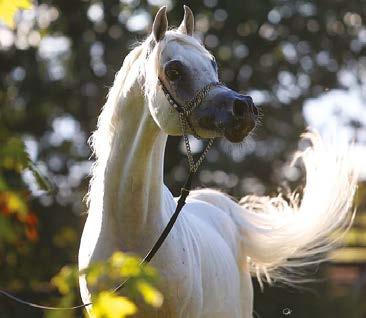
been retained by Dr. Nagel, and produced a stunning 2012 colt by NK Nadeer. After 1995, Salaa El Dine’s role was largely taken over by his sons and grandsons like NK Hafid Jamil, NK Kamar El Dine, NK Jamal El Dine and NK Nadeer. However, he was not done yet, and in 1996 he sired the very lovely grey mare, NK Aischa out of Amarilla, and this mare became a very important mare for the Ajmal Stud in Kuwait.
been retained by Dr. Nagel, and produced a stunning 2012 colt by NK Nadeer. After 1995, Salaa El Dine’s role was largely taken over by his sons and grandsons like NK Hafid Jamil, NK Kamar El Dine, NK Jamal El Dine and NK Nadeer. However, he was not done yet, and in 1996 he sired the very lovely grey mare, NK Aischa out of Amarilla, and this mare became a very important mare for the Ajmal Stud in Kuwait.
NK Nadeer. After 1995, Salaa El Dine’s role was largely taken over by his sons and grandsons like NK Hafid Jamil, NK Kamar El Dine, NK Jamal El Dine and NK Nadeer. However, he was not done yet, and in 1996 he sired the very lovely grey mare, NK Aischa out of Amarilla, and this mare became a very important mare for the Aj-mal Stud in Kuwait.
maker Al Whaid El Dine (Salaa El Dine x Gioia APS) and many other wellknown horses. In 2007 Salaa El Dine sired his last foal for Katharinenhof, in the grey stallion NK Sharaf El Dine out of NK Aziza. This valuable stal-lion spent two years at Tre Balzane Stud in Italy and belongs now to Bebo Stud of Mila Khamis.
In 1997 Salaa El Dine sired NK Asila, a full sister to N.K. Nariman. She has produced beautiful daughters to N.K. Hafid Jamil, being NK Aziza (retained by Dr. Nagel), Amarilla HM (owned by Seven Oaks Arabians in Australia) and the bay Jamilla HM sold originally to Ezzain Stud in Kuwait and now owned by the superb new stud of Abdulrahman Al Jasmi in Bahrain. In the following years Salaa El Dine sired many important horses in Europe and around the world, such as the black stallion TB Yasir, out of Sulifah, a Jamil and Salaa El Dine granddaughter, and the type maker Al Whaid El Dine (Salaa El Dine x Gioia APS) and many other well-known horses. In 2007 Salaa El Dine sired his last foal for Katharinenhof, in the grey stallion NK Sharaf El Dine out of NK Aziza. This valuable stallion spent two years at Tre Balzane Stud in
In 1997 Salaa El Dine sired NK Asila, a full sister to N.K. Nariman. She has produced beautiful daughters to N.K. Hafid Jamil, being NK Aziza (retained by Dr. Nagel), Amarilla HM (owned by Seven Oaks Arabians in Australia) and the bay Jamilla HM sold originally to Ezzain Stud in Kuwait and now owned by the superb new stud of Abdulrahman Al Jasmi in Bahrain. In the following years Salaa El Dine sired many important horses in Europe and around the world, such as the black stallion TB Yasir, out of Sulifah, a Jamil and Salaa El Dine granddaughter, and the type maker Al Whaid El Dine (Salaa El Dine x Gioia APS) and many other well-known horses. In 2007 Salaa El Dine sired his last foal for Katharinenhof, in the grey stallion NK Sharaf El Dine out of NK Aziza. This valuable stallion spent two years at Tre Balzane Stud in
In 1997 Salaa El Dine sired NK Asila, a full sister to N.K. Nariman. She has produced beautiful daughters to N.K. Hafid Jamil, being NK Aziza (retained by Dr. Nagel), Amarilla HM (owned by Seven Oaks Ara-bians in Australia) and the bay Jamilla HM sold originally to Ezzain Stud in Kuwait and now owned by the superb new stud of Abdulrahman Al Jasmi in Bahrain. In the following years Salaa El Dine sired many important horses in Europe and around the world, such as the black stallion TB Yasir, out of Sulifah, a Jamil and Salaa El Dine granddaughter, and the type
From Salaa El Dine’s 54 foals at Katharinenhof, at least 26 (nearly 50%) would be classified as outstanding horses, all of whom have bred on. These figures alone represent an extraordinary breeding career for a stallion, and the results were achieved from a variety of bloodlines – a truly remarkable feat. In addition, of course, Salaa El Dine sired many outstanding horses of both sexes for other breeders in a number of countries. Mention has already been made of the incomparable mare RN Farida in Qatar, the stallion Crusader in Sharjah and, inter alia, there is also a fine


stallion in Salaa Sihr (out of the Jamil daughter Ansata Nile Magic) at Pearsons View Stud in Australia.
Salaa El Dine had firmly fixed the type which has become known as the “ Nagel type” around the breeders’ world. Good stallions who will transmit their outstanding qualities are the basic potential of any stud, as “if you don’t
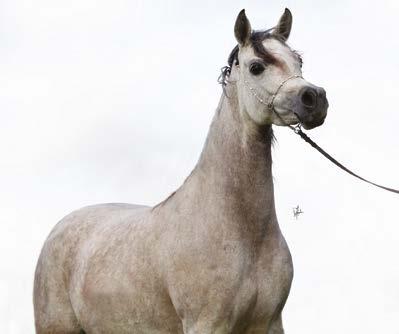
Italy and belongs now to Bebo
From Salaa El Dine’s 54 foals at Katharinenhof, at least 26 (nearly 50%) would be classified as outstanding horses, all of whom have bred on. These figures alone represent an extraordinary breeding career for a stallion, and the results were achieved from a variety of bloodlines – a truly remarkable feat. In addition, of course, Salaa El Dine sired many outstanding horses of both sexes for other breeders in a number of countries. Mention has already been made of the incomparable mare RN Farida in Qatar, the stallion Crusader in Sharjah and, inter alia, there is also a fine stallion in Salaa Sihr (out of the Jamil daughter Ansata Nile Magic) at Pearsons View Stud in Australia.
infuse with good stallions re-peatedly, the offspring will always slip down into mediocrity” (Federico Tesio). His offspring is living proof of the fact that Salaa El Dine is a top stallion who can do without flaunting displays. Still, when Salaa El Dine became 20 years old, visitors to the birthday party asked why the stallion had never been to a show, and Dr. Nagel’s answer was: “Ara-bian horses in history were used for so many purposes; they grew up under desert condi-tions or even here in Europe, and a uniform standard of evaluation never existed. I think today we have one standard, called Show. And for many years now, many breeders have been selecting their Arabian horses for the show. But from the point of view of a breeder, show criteria can’t be the only crite-ria, and they are not my criteria. So I invite you to reflect on the standard you like and you are searching for. That means you must make your own choice and then breed very consistently to reach the goal”.
From Salaa El Dine’s 54 foals at Katharinenhof, at least 26 (nearly 50%) would be classified as outstanding horses, all of whom have bred on. These figures alone represent an extraordinary breeding career for a stallion, and the results were achieved from a variety of bloodlines – a truly remarkable feat. In addition, of course, Salaa El Dine sired many outstanding horses of both sexes for other breeders in a number of countries. Mention has already been made of the incomparable mare RN Farida in Qatar, the stallion Crusader in Sharjah and, inter alia, there is also a fine stallion in Salaa Sihr (out of the Jamil daughter Ansata Nile Magic) at Pearsons View Stud in Australia.
From Salaa El Dine’s 54 foals at Katharinenhof, at least 26 (nearly 50%) would be classified as outstanding horses, all of whom have bred on. These figures alone represent an extraordinary breeding career for a stallion, and the results were achieved from a variety of bloodlines – a truly remarkable feat. In addition, of course, Salaa El Dine sired many outstanding horses of both sexes for other breeders in a number of countries. Mention has already been made of the incomparable mare RN Farida in Qatar, the stallion Crusader in Sharjah and, inter alia, there is also a fine stallion in Salaa Sihr (out of the Jamil daughter Ansata Nile Magic) at Pearsons View Stud in Australia.
Salaa El Dine had firmly fixed the type which has become known as the “ Nagel type” around the breeders’ world. Good stallions who will transmit their outstanding qualities are the basic potential of any stud, as “if you don’t infuse with good stallions repeatedly, the offspring will always slip down into mediocrity” (Federico Tesio). His offspring is living proof of the fact that Salaa El Dine is a top stallion who can do without flaunting displays. Still, when Salaa El Dine became 20 years old, visitors to the birthday
Salaa El Dine had firmly fixed the type which has become known as the “ Nagel type” around the breeders’ world. Good stallions who will transmit their outstanding qualities are the basic potential of any stud, as “if you don’t infuse with good stallions repeatedly, the offspring will always slip down into mediocrity” (Federico Tesio). His offspring is living proof of the fact that Salaa El Dine is a top stallion who can do without flaunting displays. Still, when Salaa El Dine became 20 years old, visitors to the birthday
Salaa El Dine had firmly fixed the type which has become known as the “ Nagel type” around the breeders’ world. Good stallions who will transmit their outstanding qualities are the basic potential of any stud, as “if you don’t infuse with good stallions repeatedly, the offspring will always slip down into mediocrity” (Federico Tesio). His offspring is living proof of the fact that Salaa El Dine is a top stallion who can do without flaunting displays. Still, when Salaa El Dine became 20 years old, visitors to the birthday
party asked why the stallion had never been to a show, and Dr. Nagel’s answer was: “Arabian horses in history were used for so many purposes; they grew up under desert conditions or even here in Europe, and a uniform standard of evaluation never existed. I think today we have one standard, called Show. And for many years now, many breeders have been selecting their Arabian horses for the show. But from the point of view of a breeder, show criteria can’t be the only criteria, and they are not my criteria. So I invite you to reflect on the standard you like and you are searching for. That means you must make your own choice and then breed very consistently to reach the goal”.
Thanks also to Salaa El Dine, Katharinen-hof Stud produced many fine horses which were much sought after, particularly by breeders in Qatar, Kuwait and Saudi Ara-bia, as the Arab countries became aware of the need to buy back their history and their heritage. But during this period, the foun-dations were being laid for a major quan-tum leap in refinement and quality, which would seal the future of Katharinenhof and of many other studs as well. ■
party asked why the stallion had never been to a show, and Dr. Nagel’s answer was: “Arabian horses in history were used for so many purposes; they grew up under desert conditions or even here in Europe, and a uniform standard of evaluation never existed. I think today we have one standard, called Show. And for many years now, many breeders have been selecting their Arabian horses for the show. But from the point of view of a breeder, show criteria can’t be the only criteria, and they are not my criteria. So I invite you to reflect on the standard you like and you are searching for. That means you must make your own choice and then breed very consistently to reach the goal”.
party asked why the stallion had never been to a show, and Dr. Nagel’s answer was: “Arabian horses in history were used for so many purposes; they grew up under desert conditions or even here in Europe, and a uniform standard of evaluation never existed. I think today we have one standard, called Show. And for many years now, many breeders have been selecting their Arabian horses for the show. But from the point of view of a breeder, show criteria can’t be the only criteria, and they are not my criteria. So I invite you to reflect on the standard you like and you are searching for. That means you must make your own choice and then breed very consistently to reach the goal”.
Thanks also to Salaa El Dine, Katharinenhof Stud produced many fine horses which were much sought after, particularly by breeders in Qatar, Kuwait and Saudi Arabia, as the Arab countries became aware of the need to buy back their history and their heritage. But during this period, the foundations were being laid for a major quantum leap in refinement and quality, which would seal the future of Katharinenhof and of many other studs as well.
Thanks also to Salaa El Dine, Katharinenhof Stud produced many fine horses which were much sought after, particularly by breeders in Qatar, Kuwait and Saudi Arabia, as the Arab countries became aware of the need to buy back their history and their heritage. But during this period, the foundations were being laid for a major quantum leap in refinement and quality, which would seal the future of Katharinenhof and of many other studs as well.
Thanks also to Salaa El Dine, Katharinenhof Stud produced many fine horses which were much sought after, particularly by breeders in Qatar, Kuwait and Saudi Arabia, as the Arab countries became aware of the need to buy back their history and their heritage. But during this period, the foundations were being laid for a major quantum leap in refinement and quality, which would seal the future of Katharinenhof and of many other studs as well.
by Monika Savier
What are your long-term results with Salaa El Dine, now that the 2nd and 3rd generations fill the pastures of Katharinenhof Stud?
What are your long-term results with Salaa El Dine, now that the 2nd and 3rd generations fill the pastures of Katharinenhof Stud?
Salaa El Dine has improved the overall conformation of my horses. In particular, he transmitted a markedly good shoulder, his long neck and the good topline. And the next generation also feature these positive characteristics. I can’t imagine my breeding stock without them any more.
Salaa El Dine has improved the overall con-formation of my horses. In particular, he transmitted a markedly good shoulder, his long neck and the good topline. And the next generation also feature these positive characteristics. I can’t imagine my breeding stock without them any more.
Who were his most important sons?
Who were his most important sons?
As to my own stock, that was definitely Adnan. Then there is his brother Safir who also had significant influence on the breed, serving in Doha on Al Rayyan Farm and through his son Ashal Al Rayyan. Another important son of Salaa El Dine is Mubarak who was sold to Iran quite early in his life. He had crucial influence there and was able to improve the breed country-wide. Another horse to be mentioned might be
As to my own stock, that was definitely Adnan. Then there is his brother Safir who also had significant influence on the breed, serving in Doha on Al Rayyan Farm and through his son Ashal Al Rayyan. Another important son of Salaa El Dine is Mubarak who was sold to
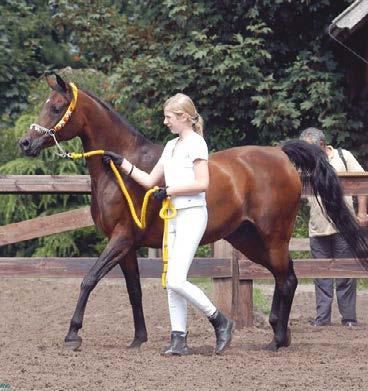
Iran quite early in his life. He had crucial influence there and was able to improve the breed country-wide. Another horse to be mentioned might be Crusader, in the UK, who was very success-ful on the racetrack before he made himself a name as an inheritor. Later, there were a lot more whose development I was not able to follow closely, but generally I noted that Salaa El Dine is a very good match for Ansata lines. Myself, I have a rather closed population of broodmares which he served, so it was rather easy to assess the results. As to outside mares, I never advertised my stal-lions, and most breeders coming to the stud have those lines themselves, but from the results of which I know, you can conclude that matings with the Judith Forbis lines continued to bring the best results.
Crusader, in the UK, who was very successful on the racetrack before he made himself a name as an inheritor. Later, there were a lot more whose development I was not able to follow closely, but generally I noted that Salaa El Dine is a very good match for Ansata lines. Myself, I have a rather closed population of broodmares which he served, so it was rather easy to assess the results. As to outside mares, I never advertised my stallions, and most breeders coming to the stud have those lines themselves, but from the results of which I know, you can conclude that matings with the Judith Forbis lines continued to bring the best results.
…and who are his most important daughters on Katharinenhof Stud?
There are many good mares, in my own stud as well as in other breeders’ stables.
The Salaa El Dine mares with the greatest influence on Katharinenhof stud itself are



…and who are his most important daughters on Katharinenhof Stud?
There are many good mares, in my own stud as well as in other breeders’ stables. The Salaa El Dine mares with the greatest influence on Katharinenhof stud itself are Nashua, Helala, Nariman, and Ranya. But there is also Asila, no longer in our stable, who transmitted excellently.
Does Salaa El Dine reveal more of his dam Hanan or of his sire Ansata Halim Shah?
Salaa El Dine is a good combination of both. Many of his sons are, to name one thing, definitely more long-legged that he was. His beautiful long neck and the well-built legs, that is Hanan heritage. And Hanan had a singularly good tail carriage which he inherited from her, not to men-tion pigmentation, which results in that oc-casional black offspring of his. From Halim Shah he got the good shoulder and croup, in addition to the Arabian noblesse he consolidated overall.
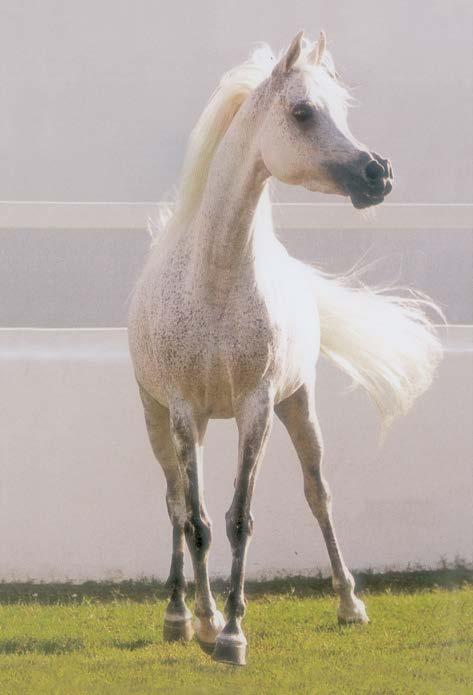
Nashua, Helala, Nariman, and Ranya. But there is also Asila, no longer in our stable, who transmitted excellently.
Looking back, would you state that Salaa El Dine was the best of the sons of Ansata Halim Shah?
Nashua, Helala, Nariman, and Ranya. But there is also Asila, no longer in our stable, who transmitted excellently.
Does Salaa El Dine reveal more of his dam Hanan or of his sire Ansata Halim Shah?
Does Salaa El Dine reveal more of his dam Hanan or of his sire Ansata Halim Shah?
Salaa El Dine is a good combination of both. Many of his sons are, to name one thing, definitely more long-legged that he was. His beautiful long neck and the well-
The stallion that accomplished most, due to his great influence, is definitely Salaa El Dine, followed by Maysoun. In the Middle East, there is Ansata Hejazi who is highly influential, and Al Adeed Al Shaquab, of course. There was also El Thay Ibn Halim Shah, unfortunately
Salaa El Dine is a good combination of both. Many of his sons are, to name one thing, definitely more long-legged that he was. His beautiful long neck and the well-
passed away early, but he had already started to attract atten-tion as an important son of Ansata Halim Shah.
Was Salaa El Dine a milestone in Katharinenhof Stud?
built legs, that is Hanan heritage. And Hanan had a singularly good tail carriage which he inherited from her, not to mention pigmentation, which results in that occasional black offspring of his. From Halim Shah he got the good shoulder and croup, in addition to the Arabian noblesse he consolidated overall.
built legs, that is Hanan heritage. And Hanan had a singularly good tail carriage which he inherited from her, not to mention pigmentation, which results in that occasional black offspring of his. From Halim Shah he got the good shoulder and croup, in addition to the Arabian noblesse he consolidated overall.
He was a landmark and “watershed”. He was incredibly important for my whole concept of breeding, which is still true for today.
Looking back, would you state that Salaa El
Looking back, would you state that Salaa El

who accomplished so much for your own breeding – you can’t but keep such a horse. What recommendations can you give on the subject of using Salaa El Dine offspring?
Dine was the best of the sons of Ansata Halim Shah?
Dine was the best of the sons of Ansata Halim Shah?

The stallion that accomplished most, due to his great influence, is definitely Salaa El Dine, followed by Maysoun. In the Middle East, there is Ansata Hejazi who is highly influential, and Al Adeed Al Shaquab, of course. There was also El Thay Ibn Halim Shah, unfortunately passed away early, but he had already started to attract attention as an important son of Ansata Halim Shah.
was the best of the sons of Ansata Halim
The stallion that accomplished most, due to his great influence, is definitely Salaa El Dine, followed by Maysoun. In the Middle East, there is Ansata Hejazi who is highly influential, and Al Adeed Al Shaquab, of course. There was also El Thay Ibn Halim Shah, unfortunately passed away early, but he had already started to attract attention as an important son of Ansata Halim Shah.
Halim due El Middle highly of Halim but attenHalim Katharwas concept have Midsell relationship were horse
There are rumours that enormous sums have been offered for Salaa El Dine from the Mid-dle East.
Salaa El Dine was my horse. You don’t sell a horse you have that kind of relationship and attachment to. It’s just as if you were giving away the soul of the stud. A horse who accomplished so much for your own breeding – you can’t but keep such a horse.
stallion that accomplished most, due great influence, is definitely Salaa El followed by Maysoun. In the Middle there is Ansata Hejazi who is highly influential, and Al Adeed Al Shaquab, of There was also El Thay Ibn Halim unfortunately passed away early, but already started to attract attenan important son of Ansata Halim
Was Salaa El Dine a milestone in Katharinenhof Stud?
Was Salaa El Dine a milestone in Katharinenhof Stud?
He was a landmark and “watershed”. He was incredibly important for my whole concept of breeding, which is still true for today.
He was a landmark and “watershed”. He was incredibly important for my whole concept of breeding, which is still true for today.
who accomplished so much for your own breeding – you can’t but keep such a horse. What recommendations can you give on the subject of using Salaa El Dine offspring?
he was more generally ad-vertised and used, outside of Ansata Farm, with the result that the number of success-ful offspring decreased markedly. There is now offspring of his that don’t live up to the results he achieved in Germany. The same is true for Salaa El Dine.
by El La Diva Stud,
who accomplished so much for your own breeding – you can’t but keep such a horse. What recommendations can you give on the subject of using Salaa El Dine offspring? It’s easier to predict the results if you breed with related blood and lines. Generally, however, it’s true that mares should be beautiful to be considered for breeding. When Ansata Halim Shah was at my place, I chose 35 hand-picked mares for him. The results were great, with the exception of just 2 or 3 foals. Later, when he
who accomplished so much for your own breeding – you can’t but keep such a horse. What recommendations can you give on the subject of using Salaa El Dine offspring?
There are rumours that enormous sums have been offered for Salaa El Dine from the Middle East.
It’s easier to predict the results if you breed with related blood and lines. Generally, however, it’s true that mares should be beautiful to be considered for breeding. When Ansata Halim Shah was at my place, I chose 35 hand-picked mares for him. The results were great, with the exception of just 2 or 3 foals. Later, when he was in the US, he was more generally advertised and used, outside of Ansata Farm, with the result that the number of successful offspring decreased markedly. There is now offspring of his that don’t live up to the results he achieved in Germany. The same is true for Salaa El Dine. Stallions are to improve the breed, but the mares need to provide a quality basis for the stallion to stand a chance to transmit his big points. Successful breeding works only if you have two good parents who are mutually compensative.
There are rumours that enormous sums have been offered for Salaa El Dine from the Middle East.
What recommendations can you give on the subject of using Salaa El Dine offspring? It’s easier to predict the results if you breed with related blood and lines. Generally, however, it’s true that mares should be beautiful to be considered for breeding. When Ansata Halim Shah was at my place, I chose 35 handpicked mares for him. The results were great, with the ex-ception of just 2 or 3 foals. Later, when he was in the US,
Salaa El Dine was my horse. You don’t sell a horse you have that kind of relationship and attachment to. It’s just as if you were giving away the soul of the stud. A horse
Salaa El Dine was my horse. You don’t sell a horse you have that kind of relationship and attachment to. It’s just as if you were giving away the soul of the stud. A horse
Monika Savier
El Dine a milestone in KatharStud?
landmark and “watershed”. He was
It’s easier to predict the results if you breed with related blood and lines. Generally, however, it’s true that mares should be beautiful to be considered for breeding. When Ansata Halim Shah was at my place, I chose 35 hand-picked mares for him. The results were great, with the exception of just 2 or 3 foals. Later, when he was in the US, he was more generally advertised and used, outside of Ansata Farm, with the result that the number of successful offspring decreased markedly. There is
It’s easier to predict the results if you breed with related blood and lines. Generally, however, it’s true that mares should be beautiful to be considered for breeding. When Ansata Halim Shah was at my place, I chose 35 hand-picked mares for him. The results were great, with the ex ception of just 2 or 3 foals. Later, when he was in the US, he was more generally ad vertised and used, outside of Ansata Farm, with the result that the number of success ful offspring decreased markedly. There is now offspring of his that don’t live up to the results he achieved in Germany. The same is true for Salaa El Dine. Stallions are to improve the breed, but the mares need to provide a quality basis for the stal lion to stand a chance to transmit his big points. Successful breeding works only if you have two good parents who are mutually compensative.

Stallions are to improve the breed, but the mares need to provide a quality basis for the stal-lion to stand a chance to transmit his big points. Successful breeding works only if you have two good parents who are mutu-ally compensative. ■


